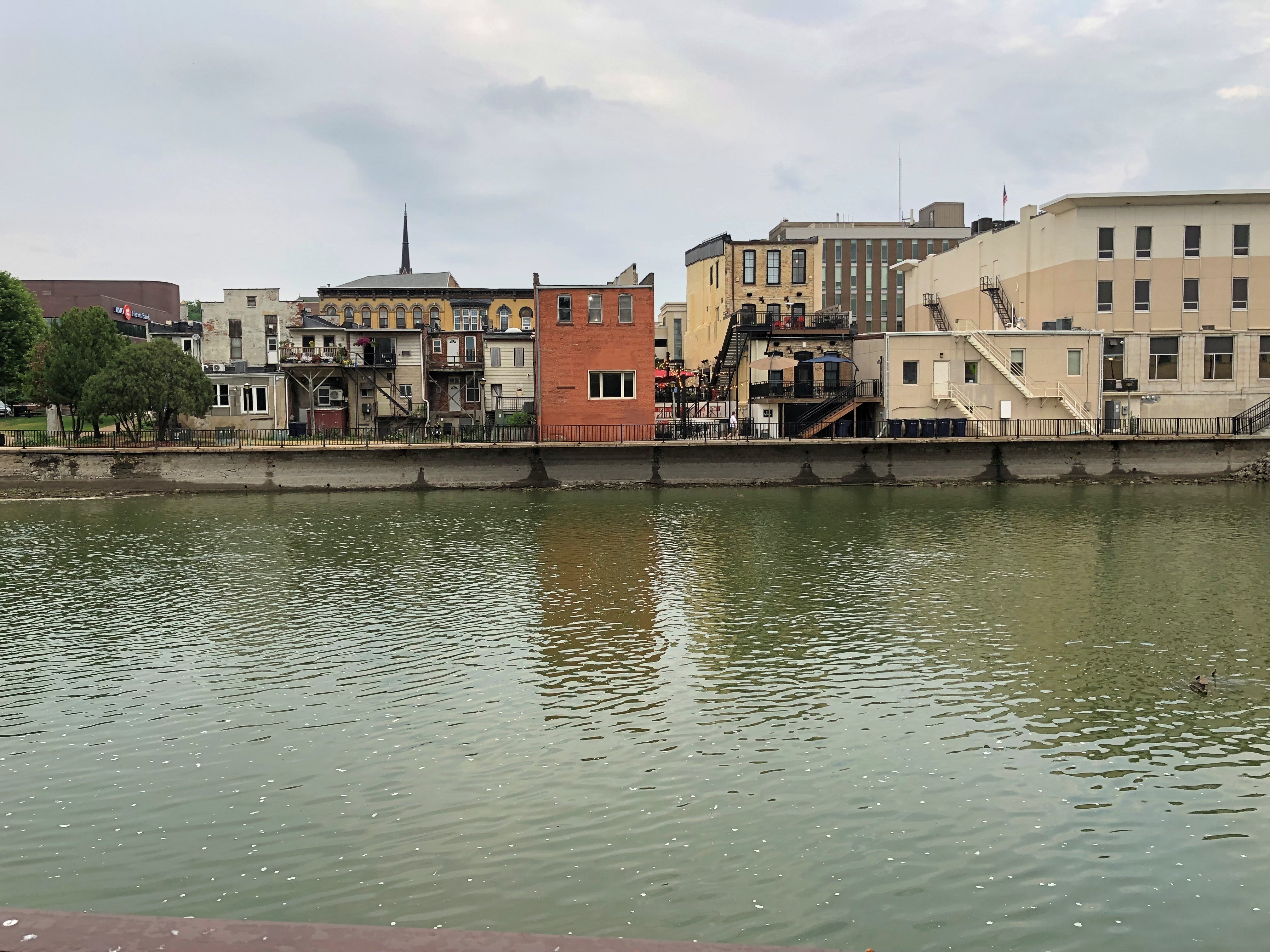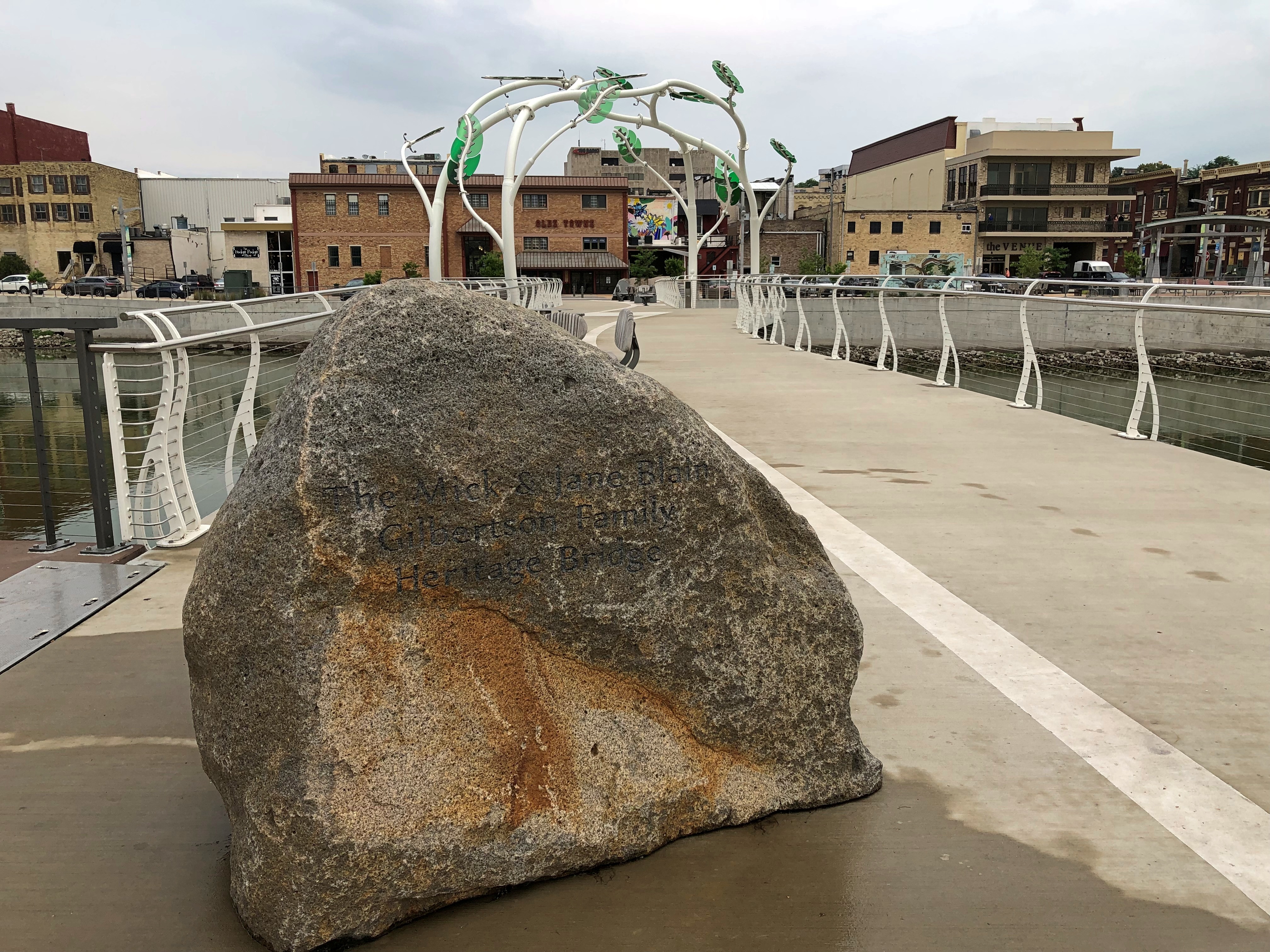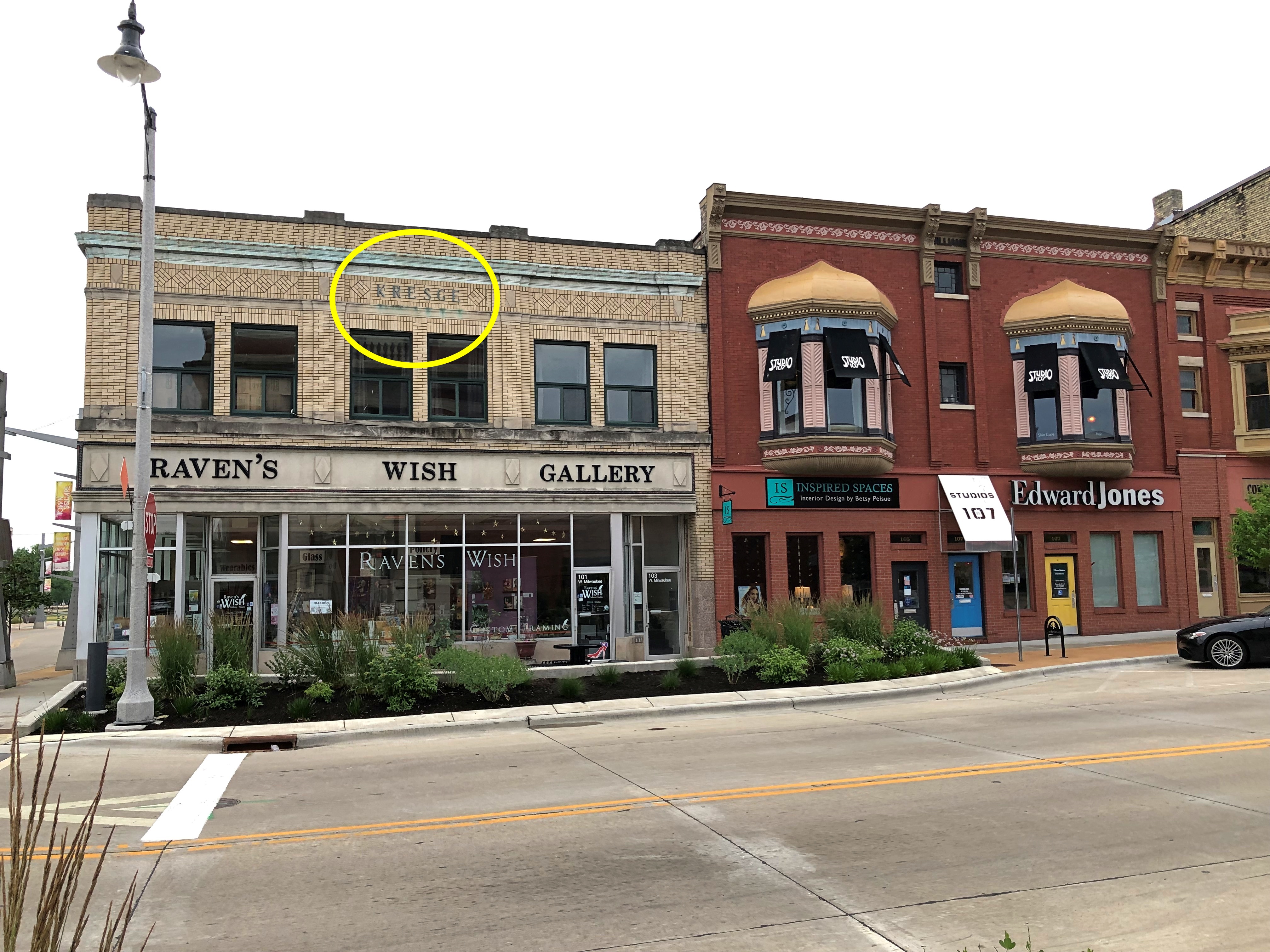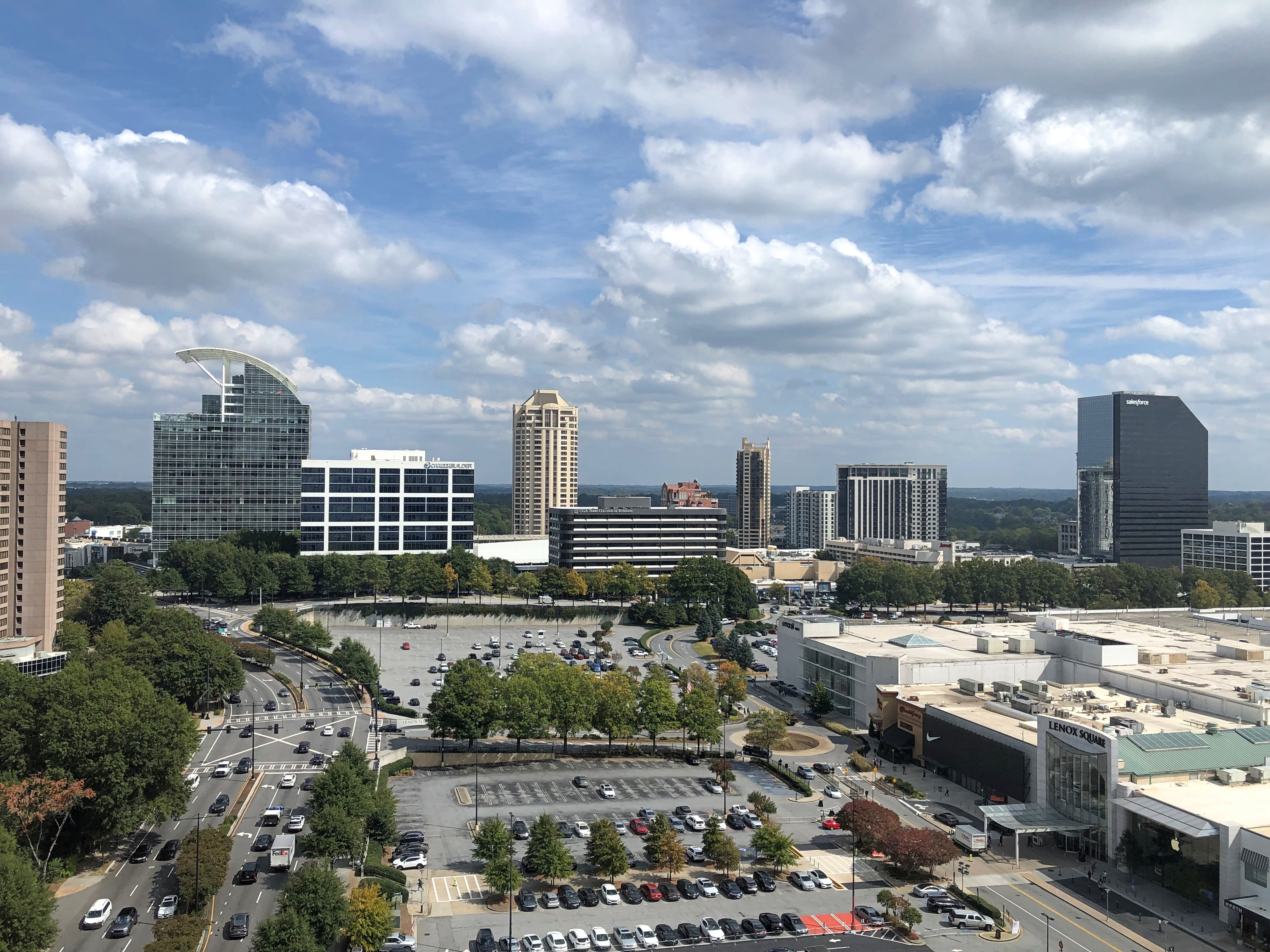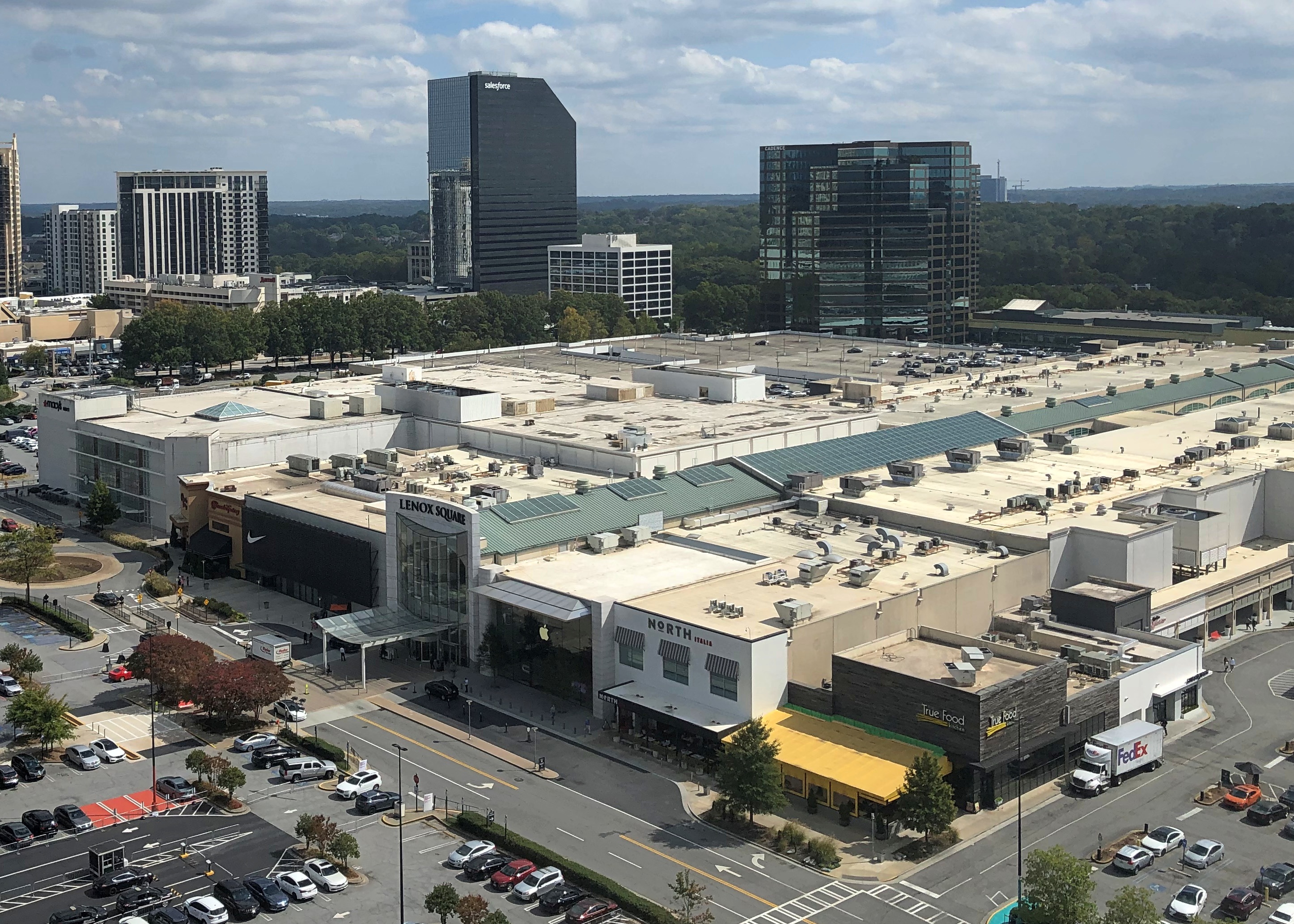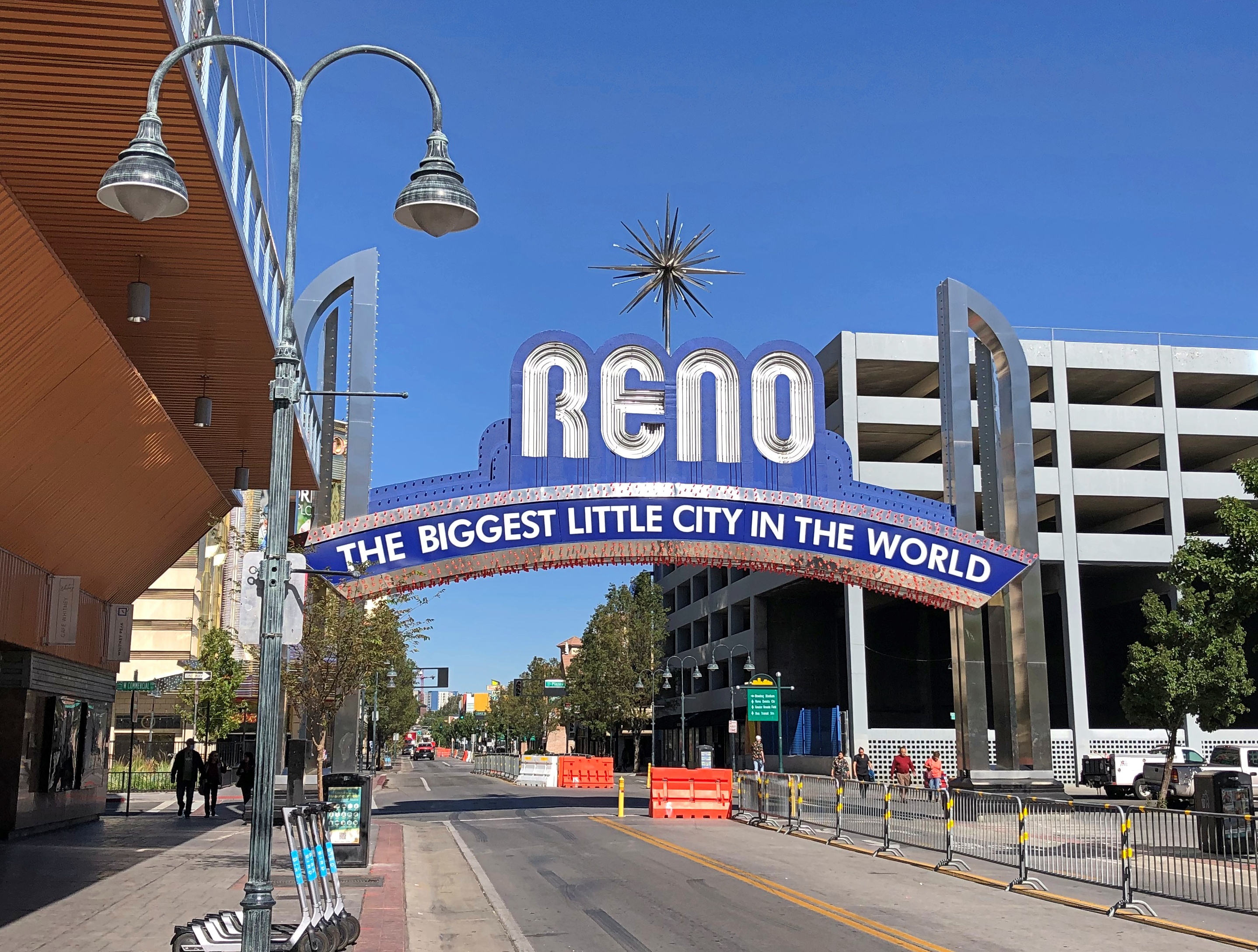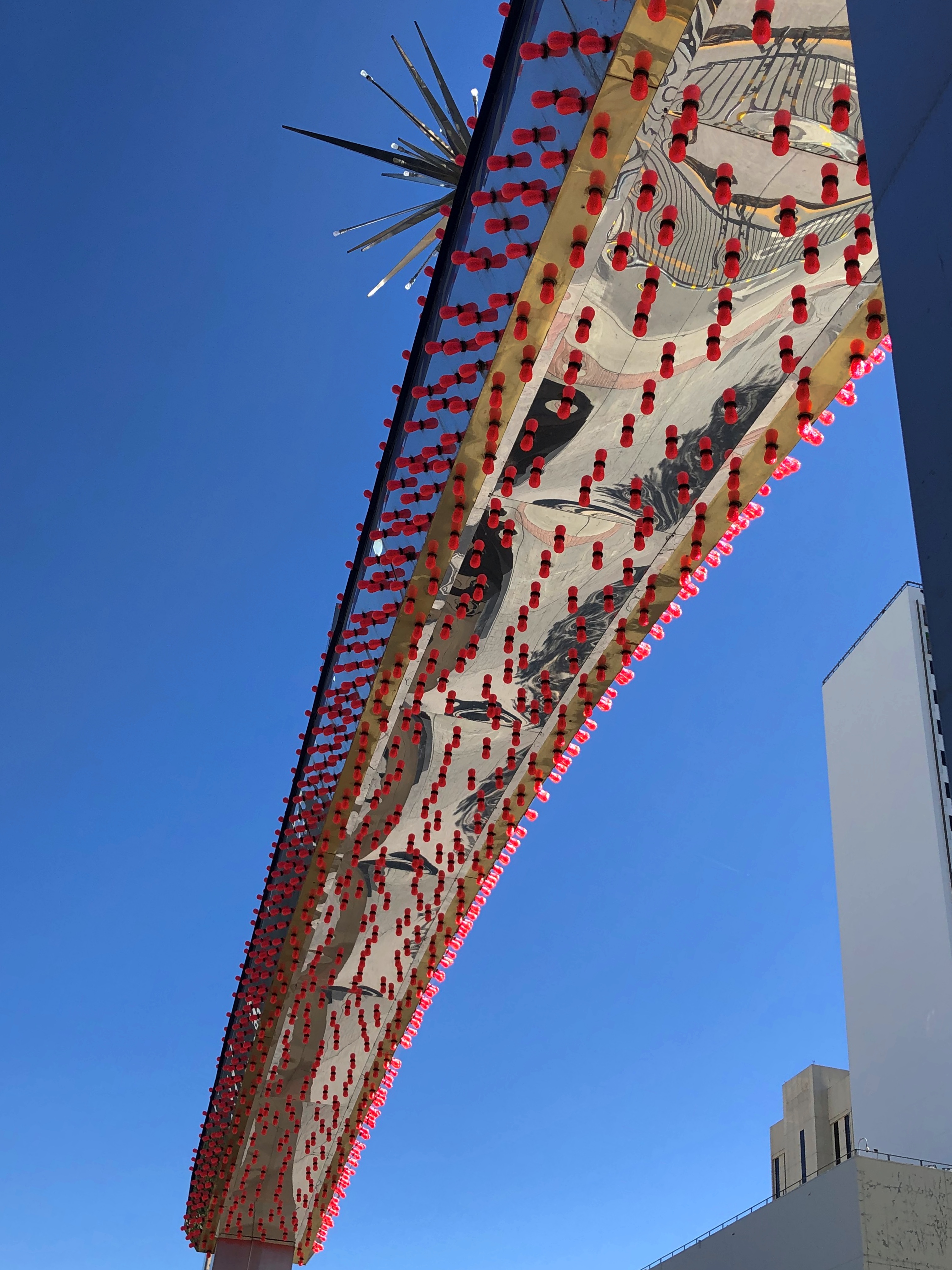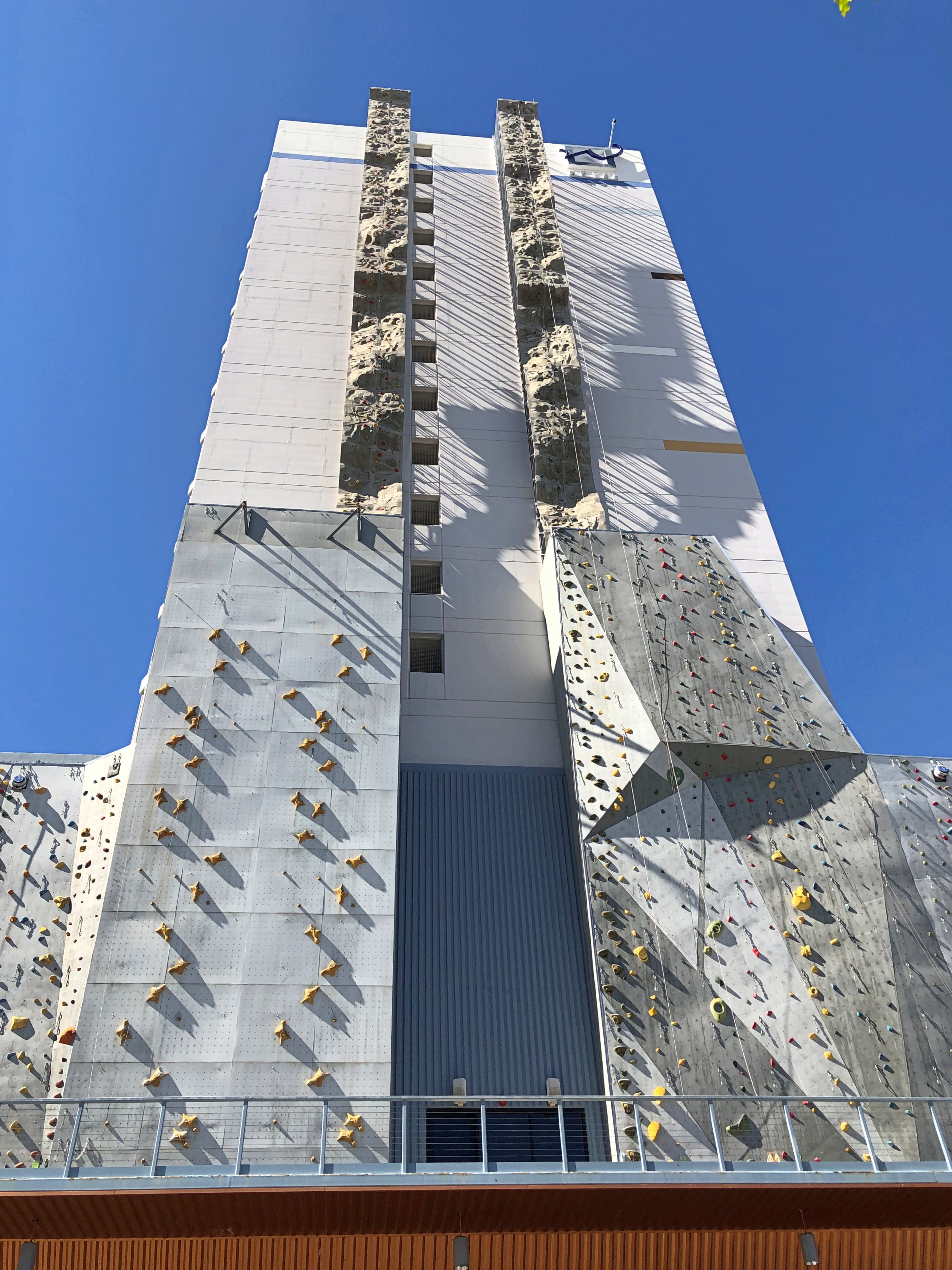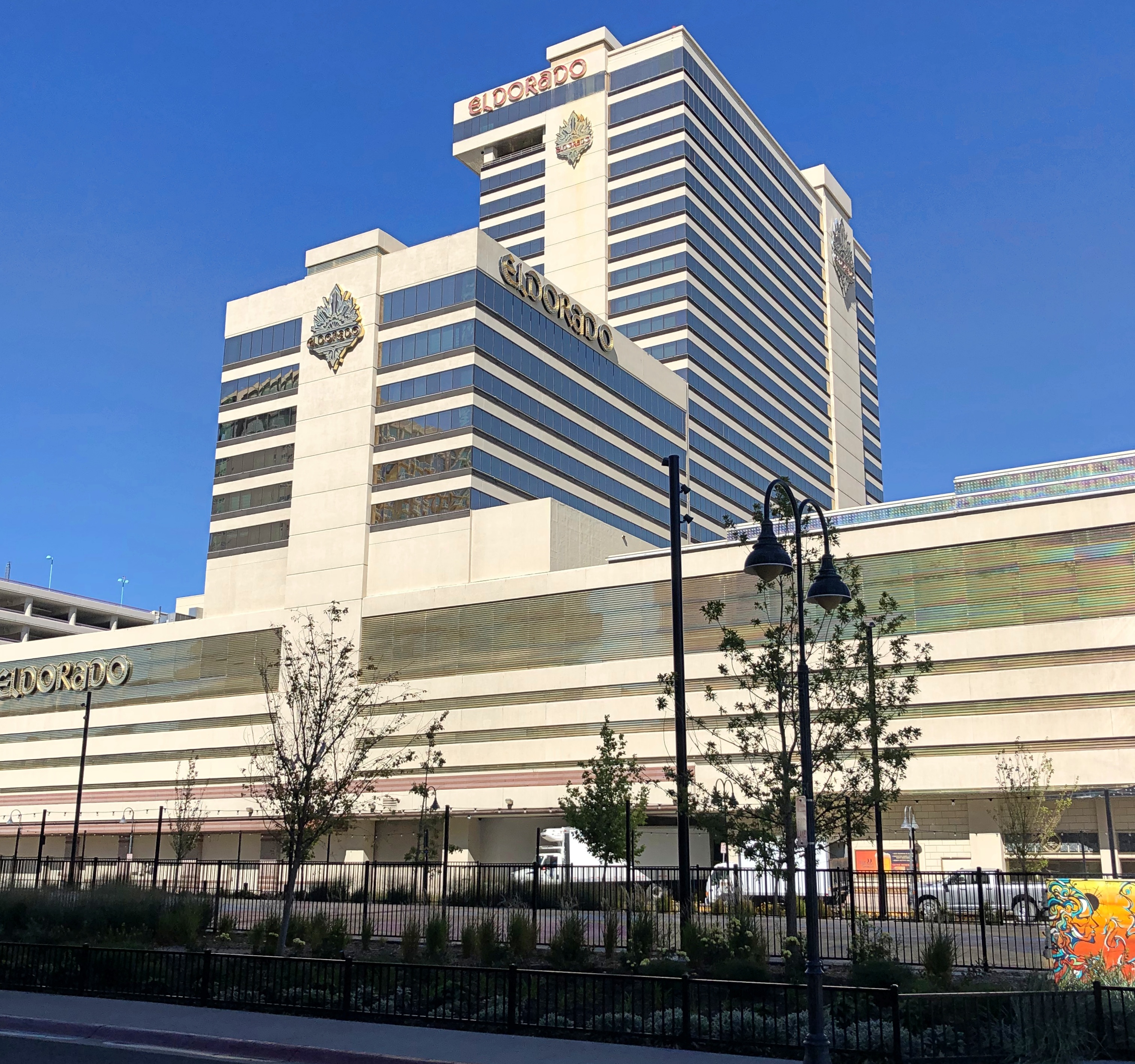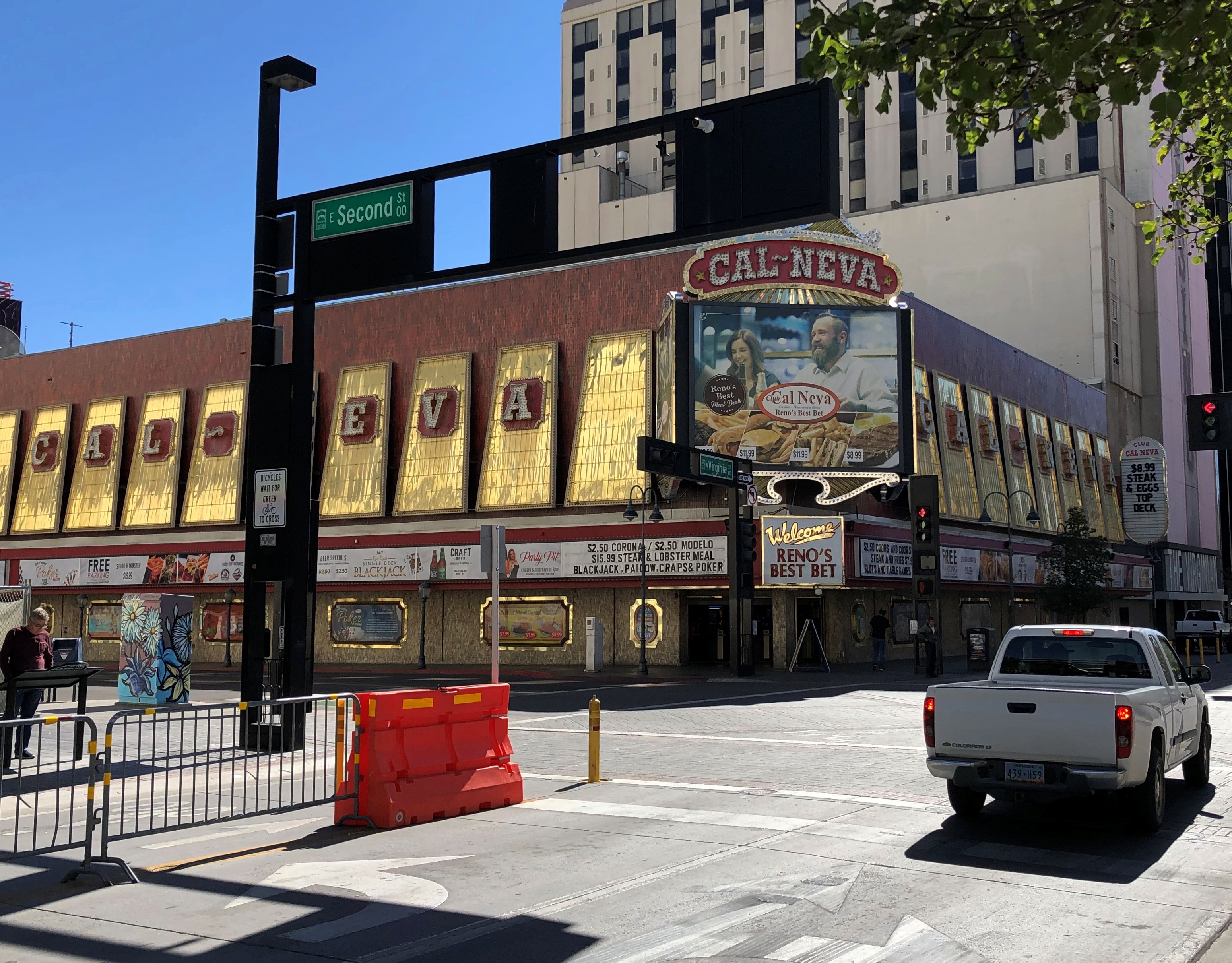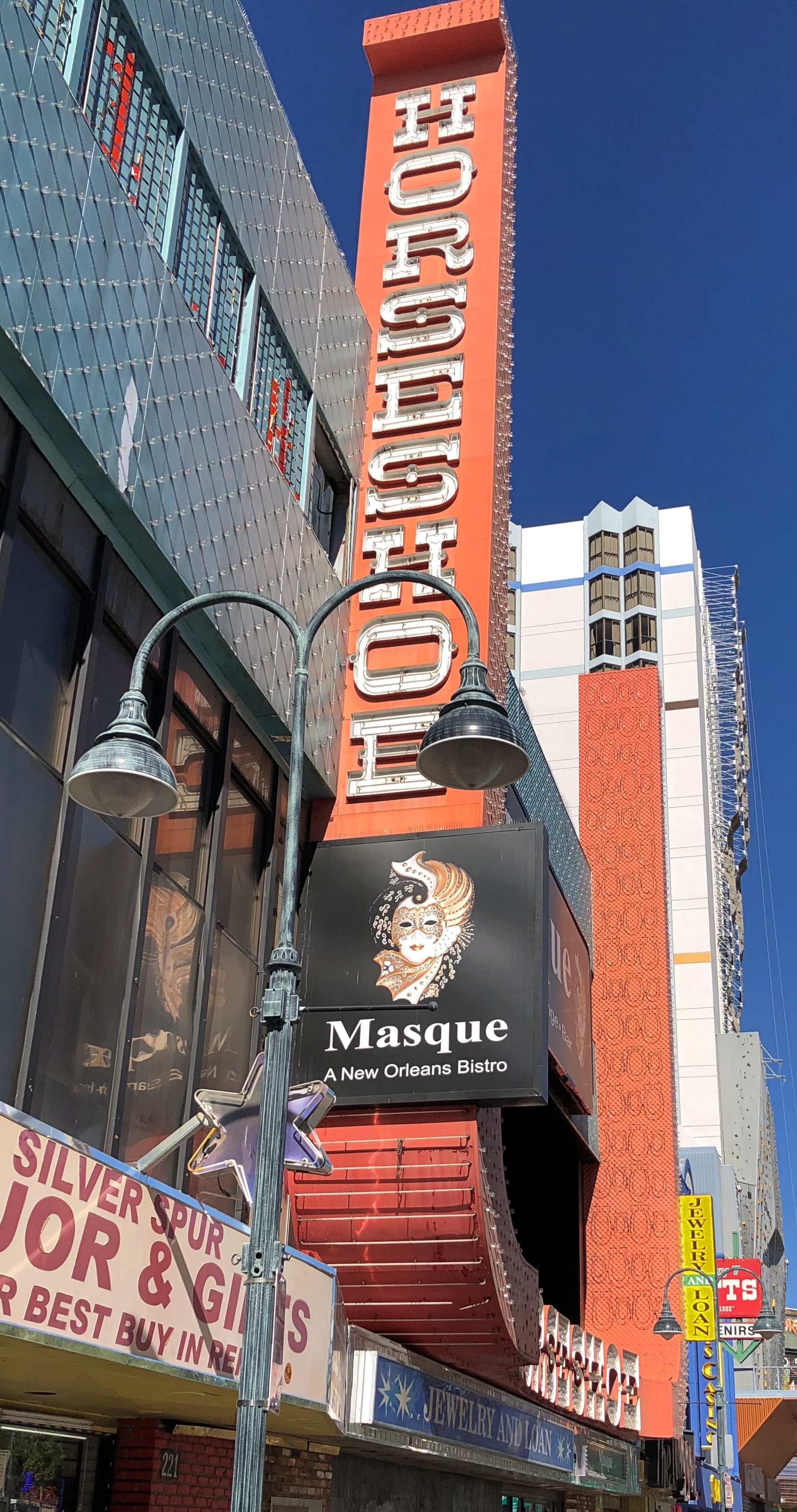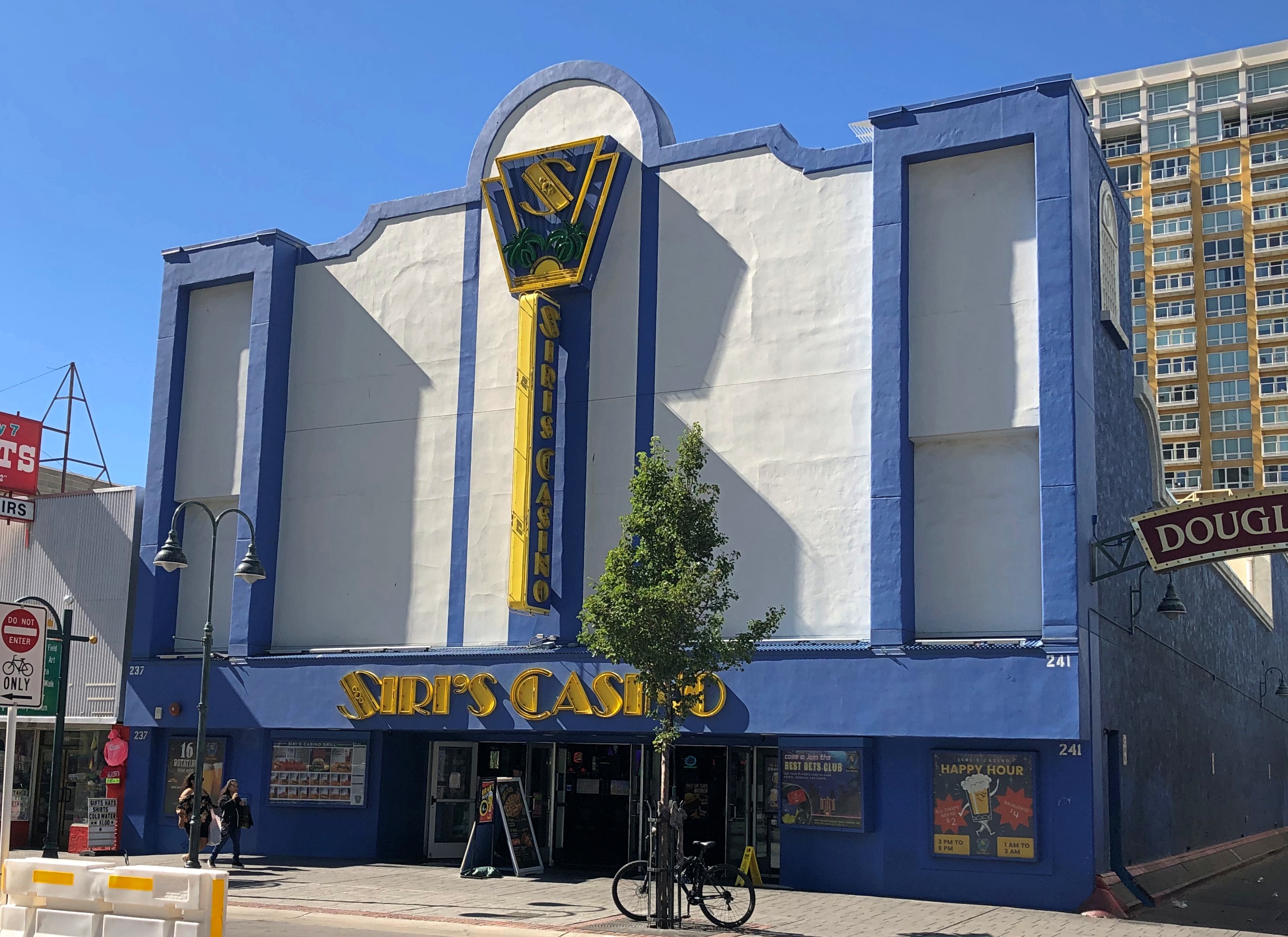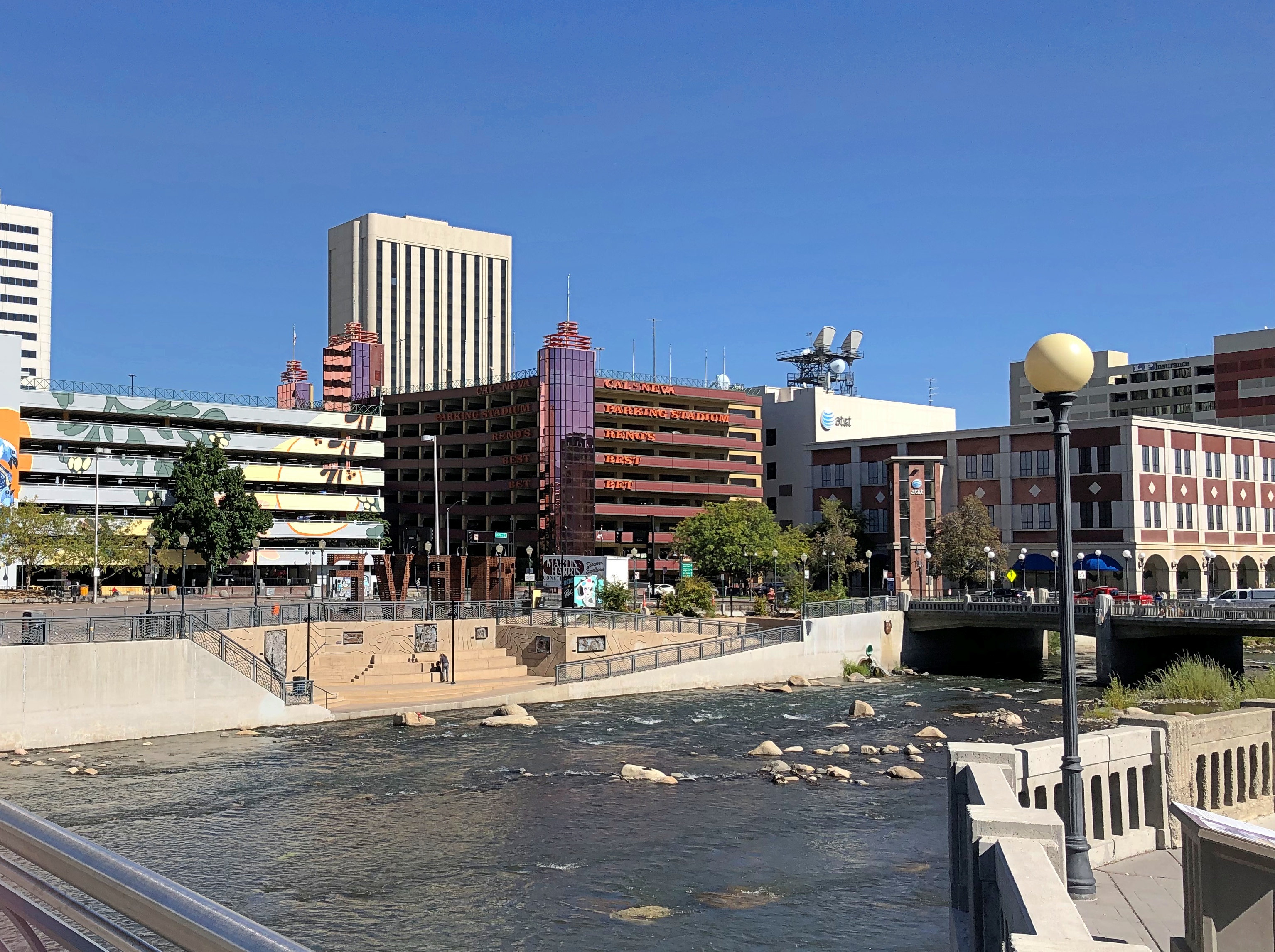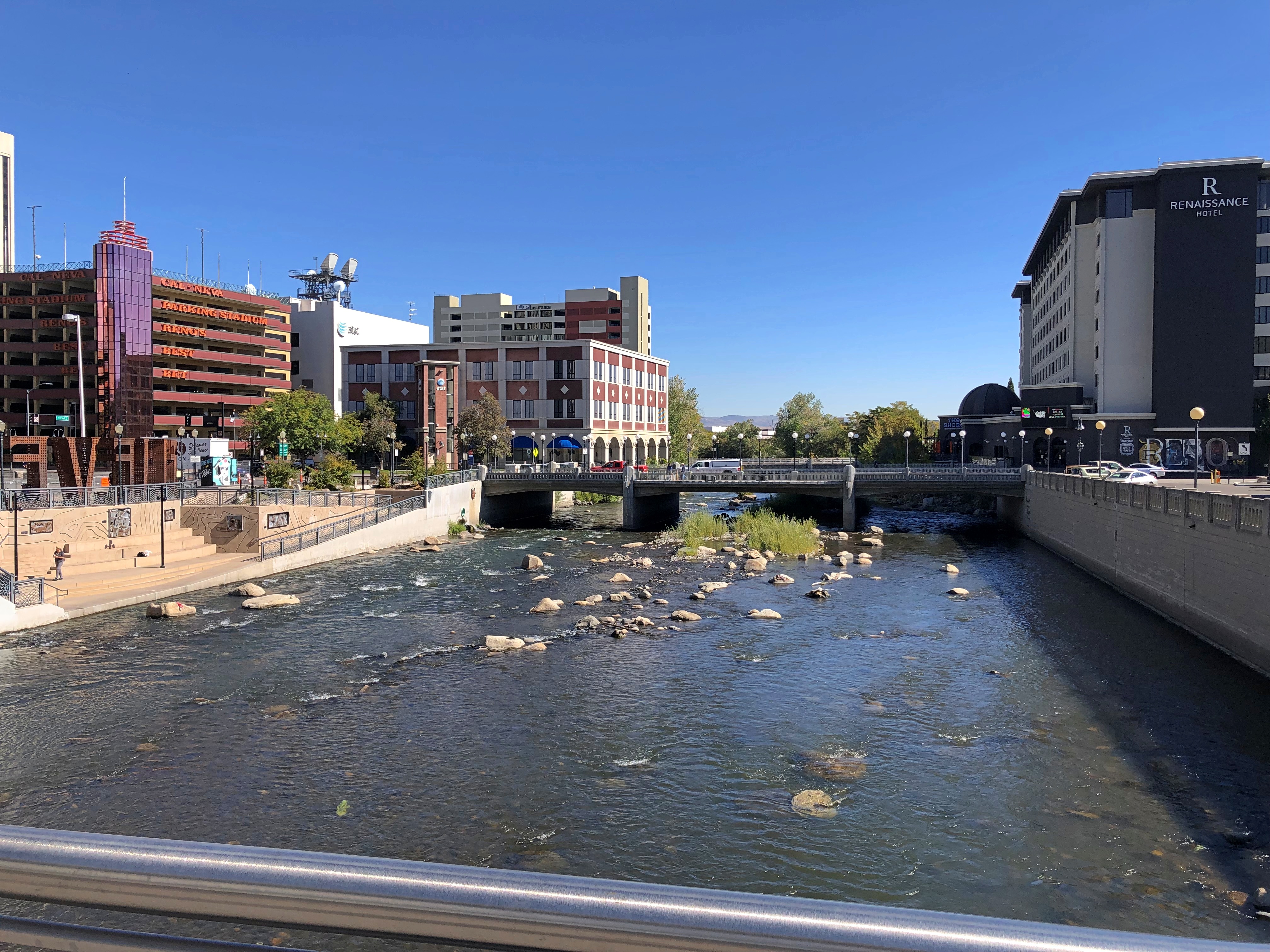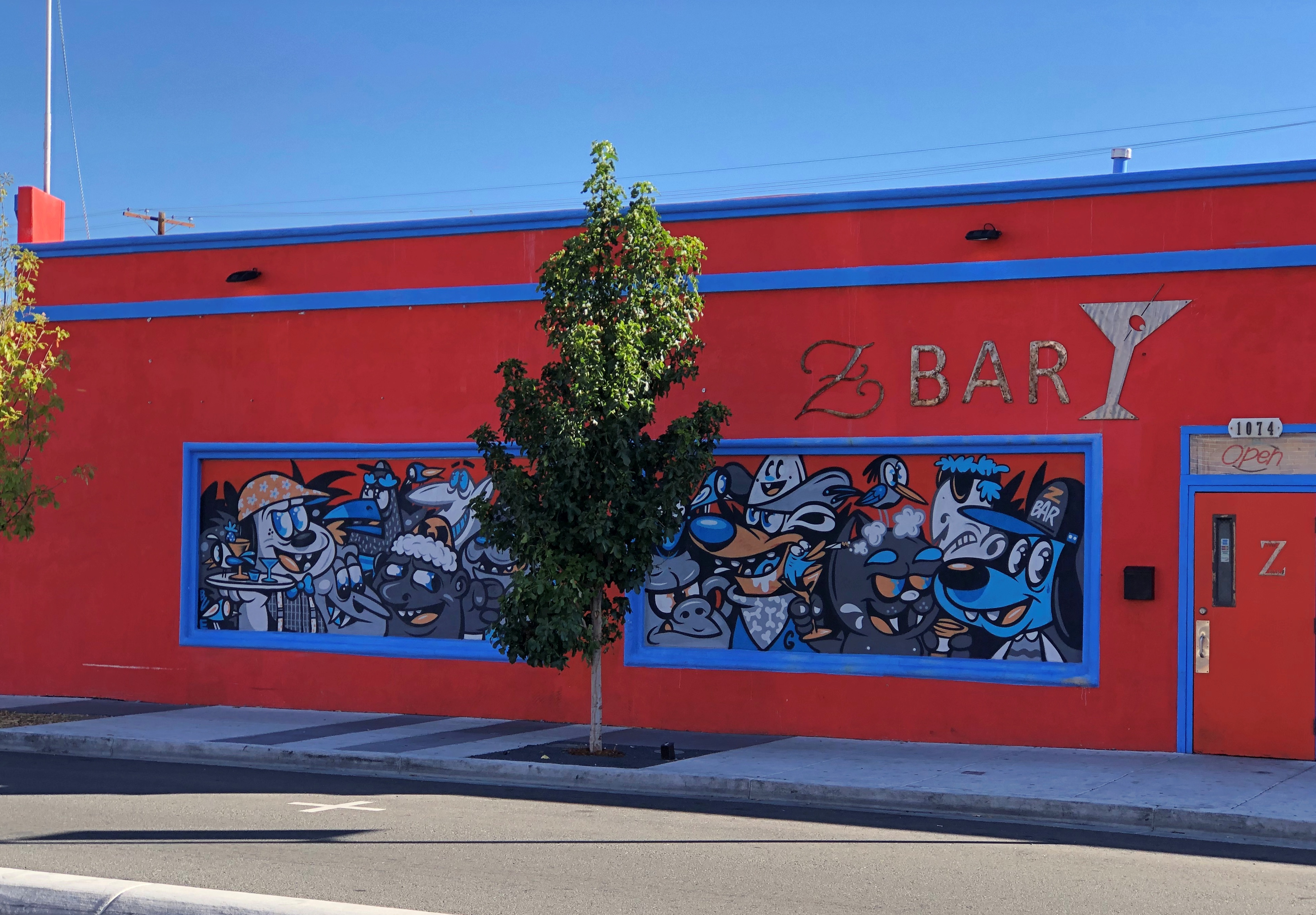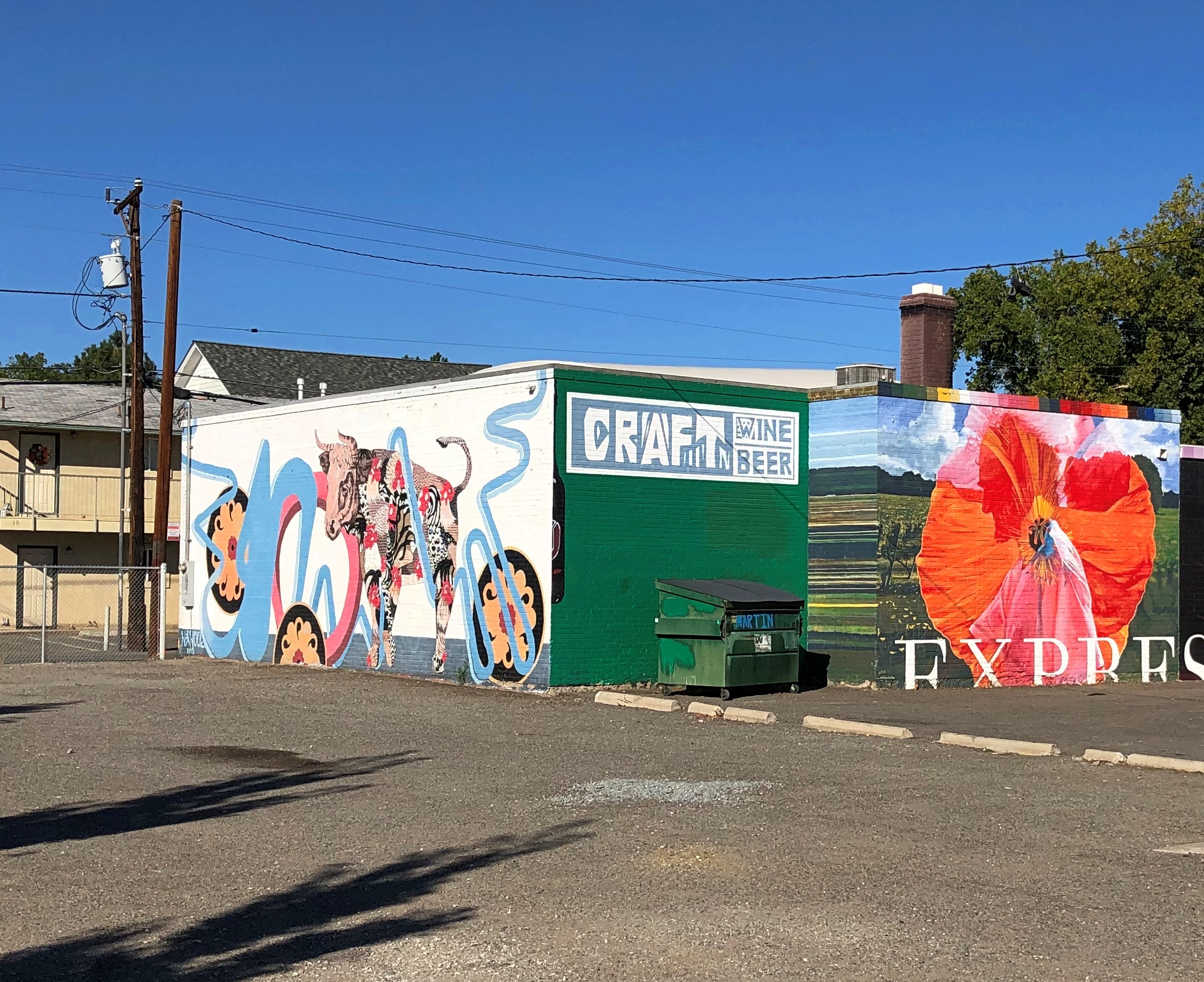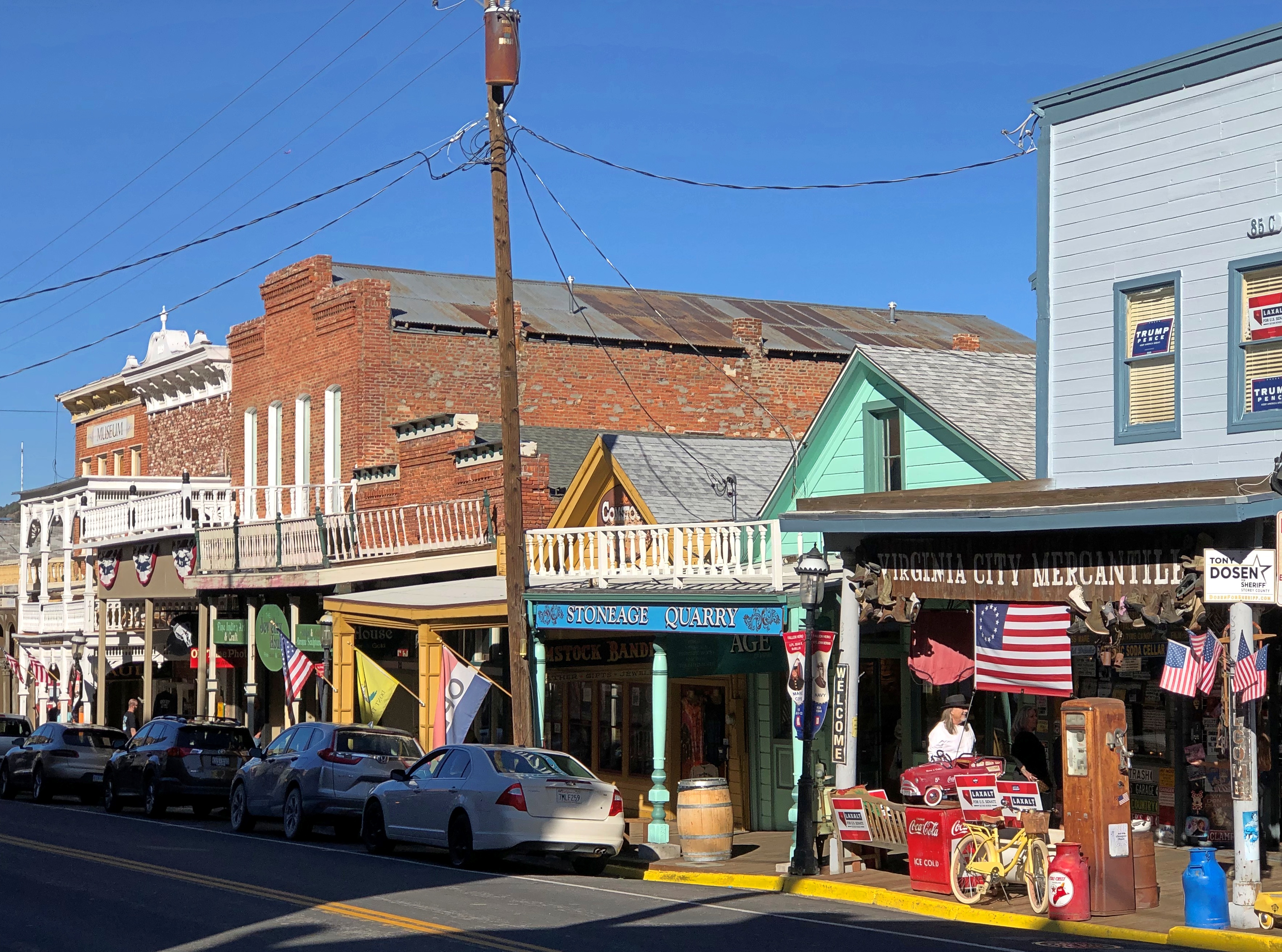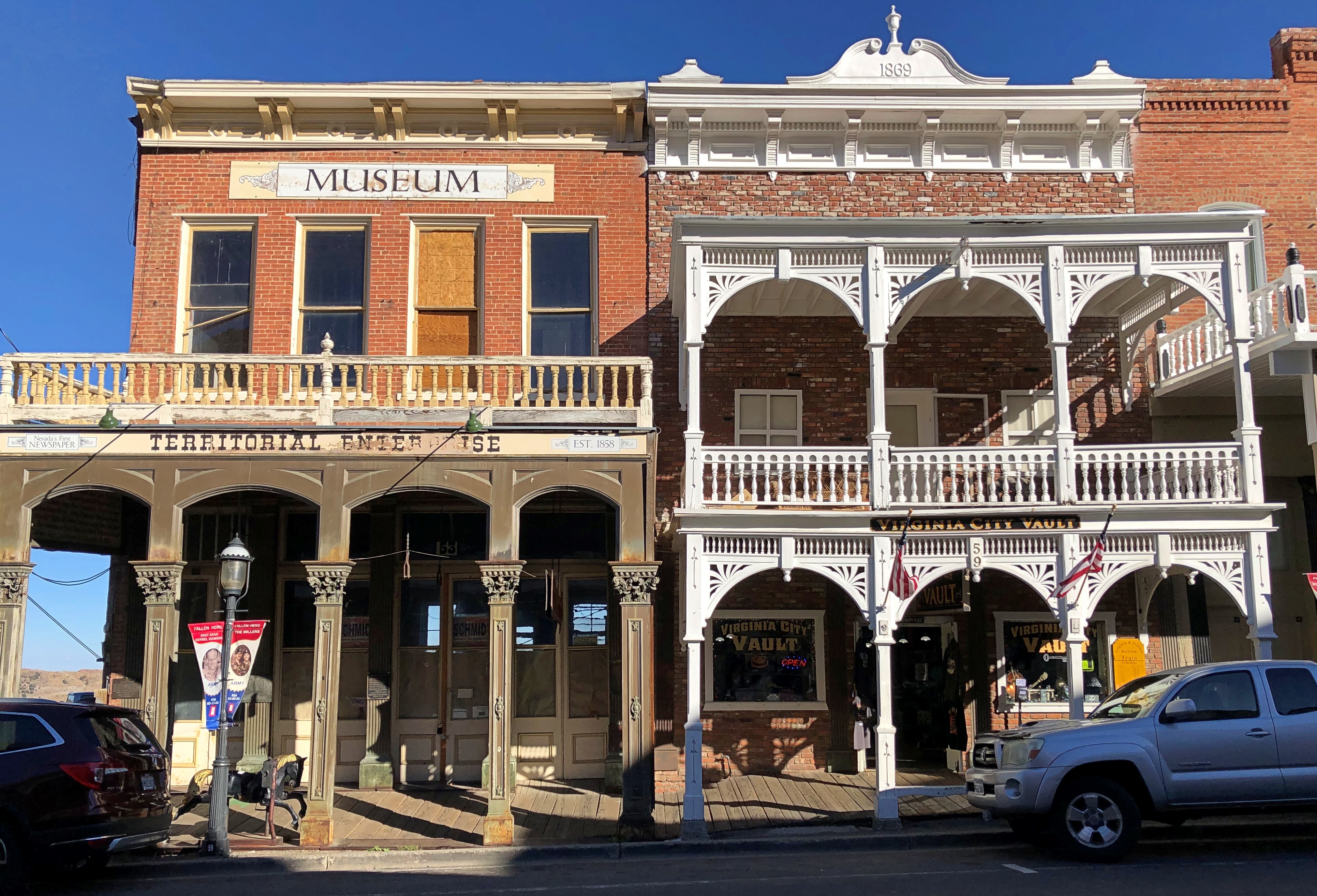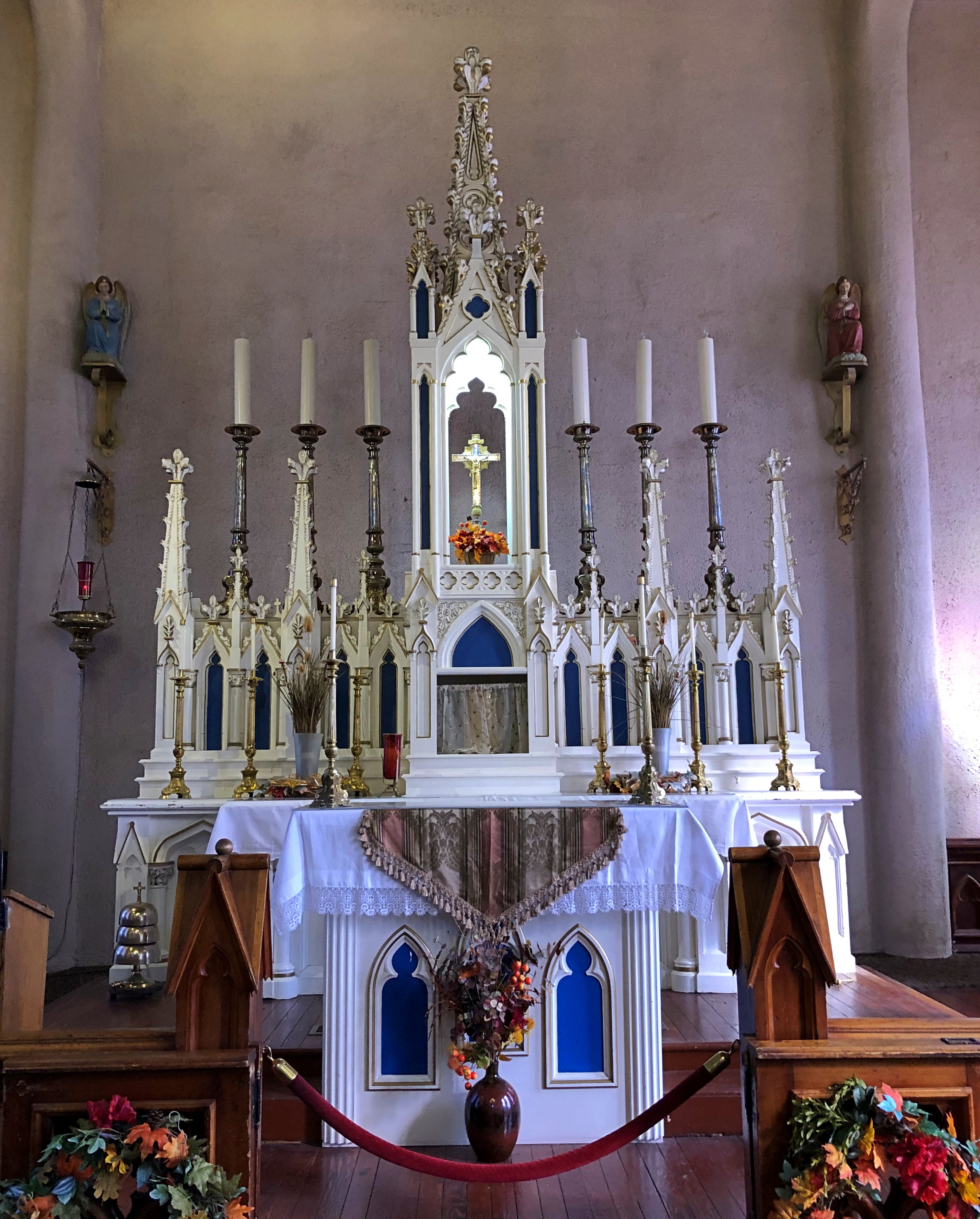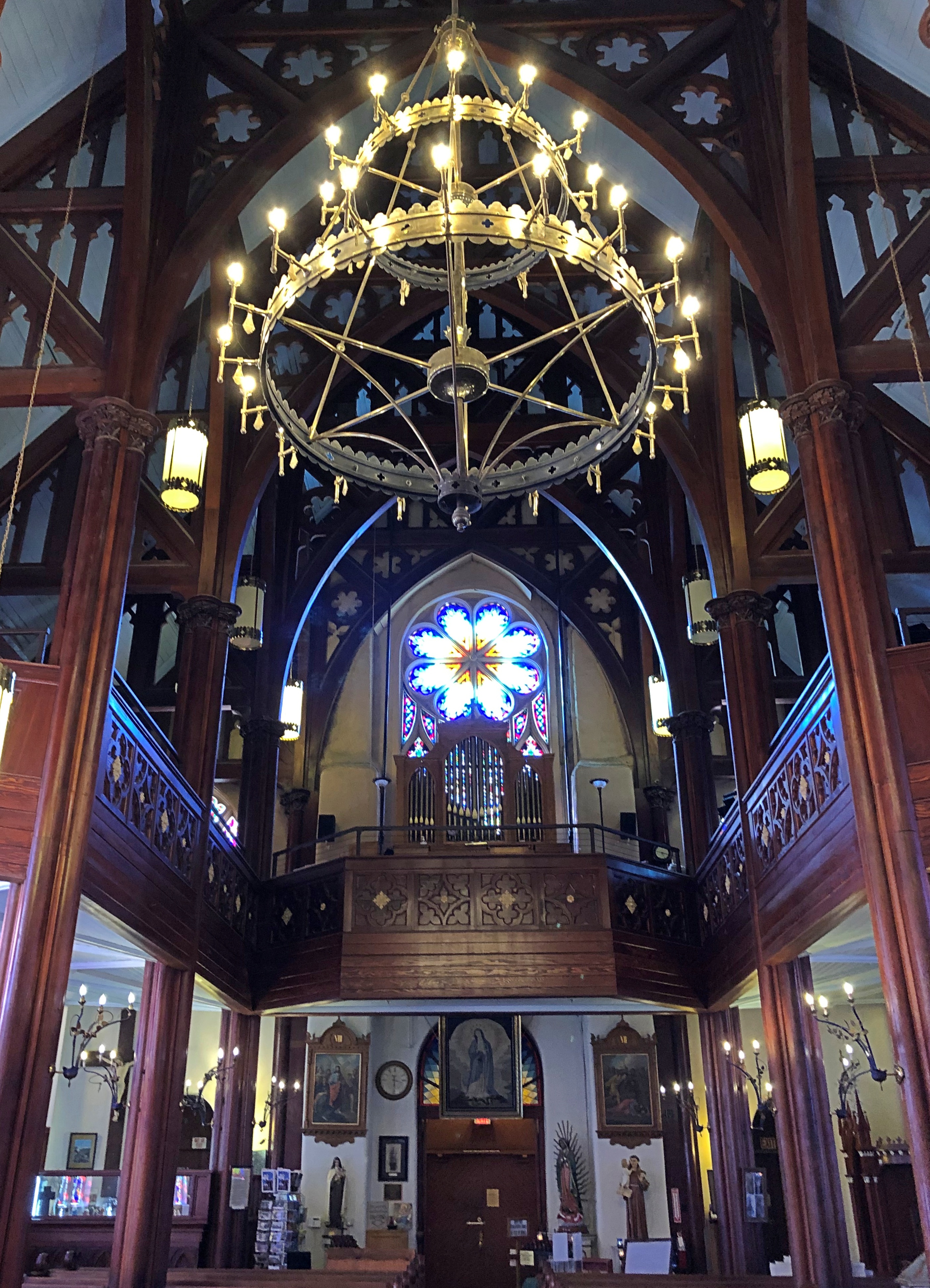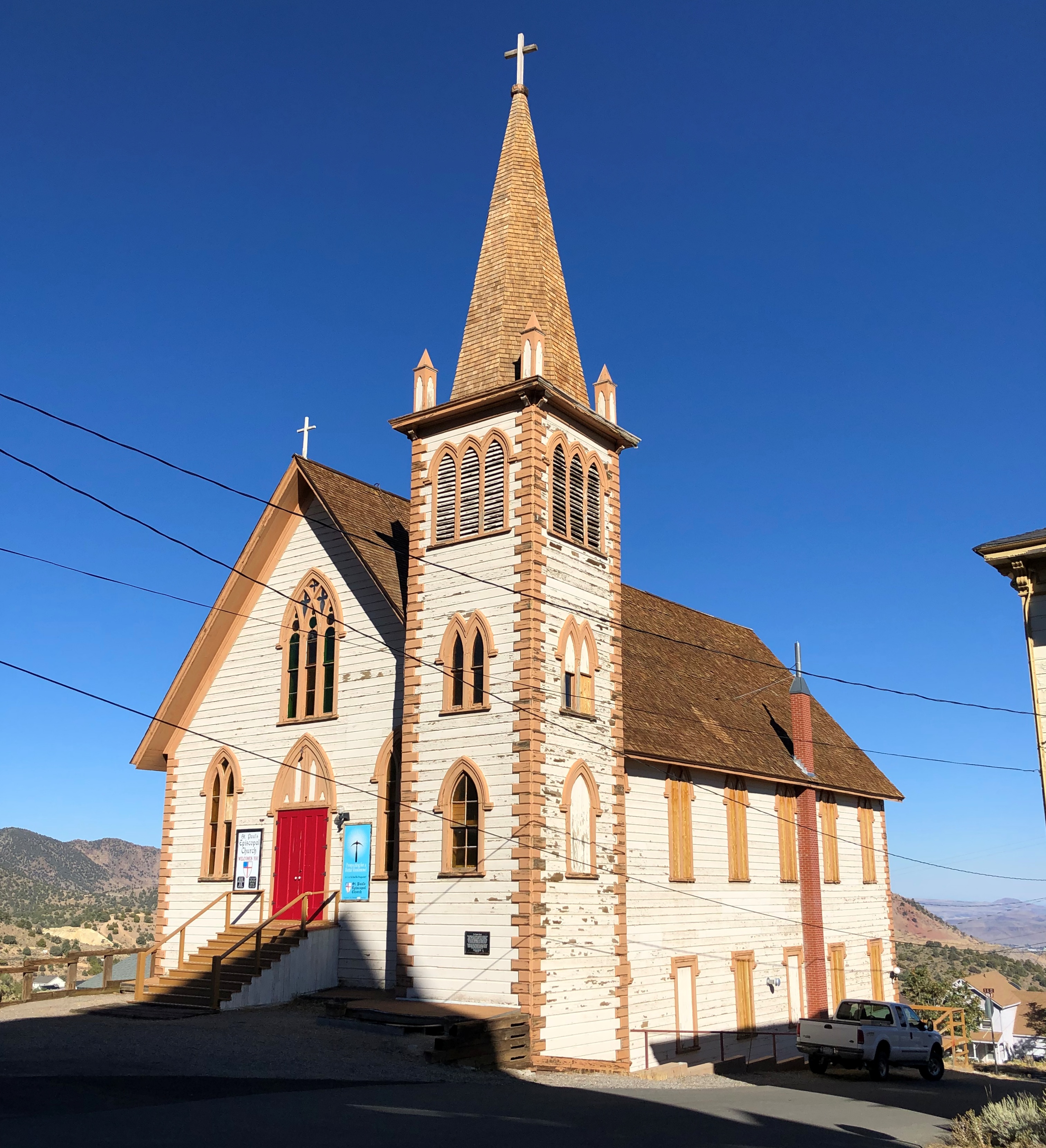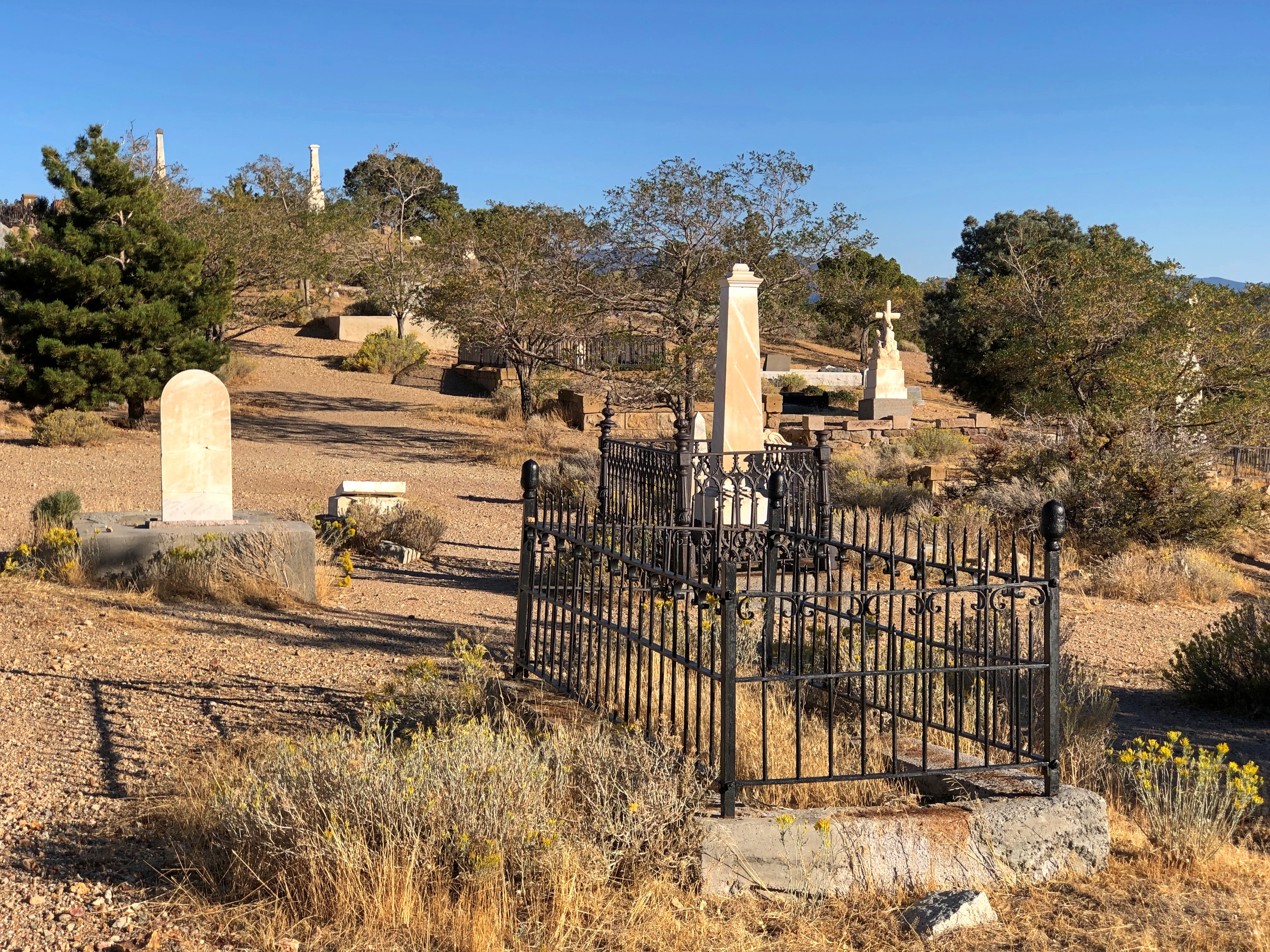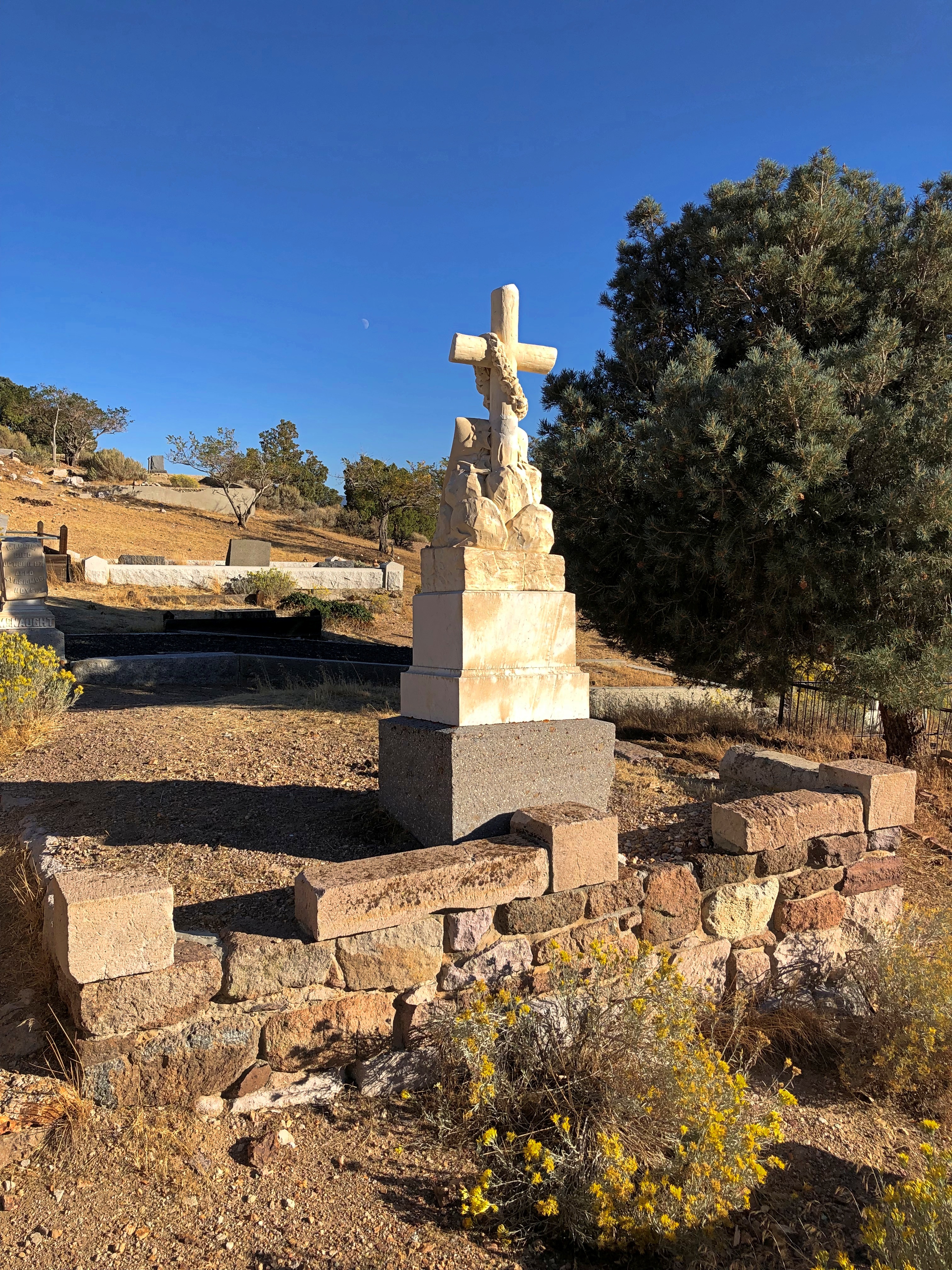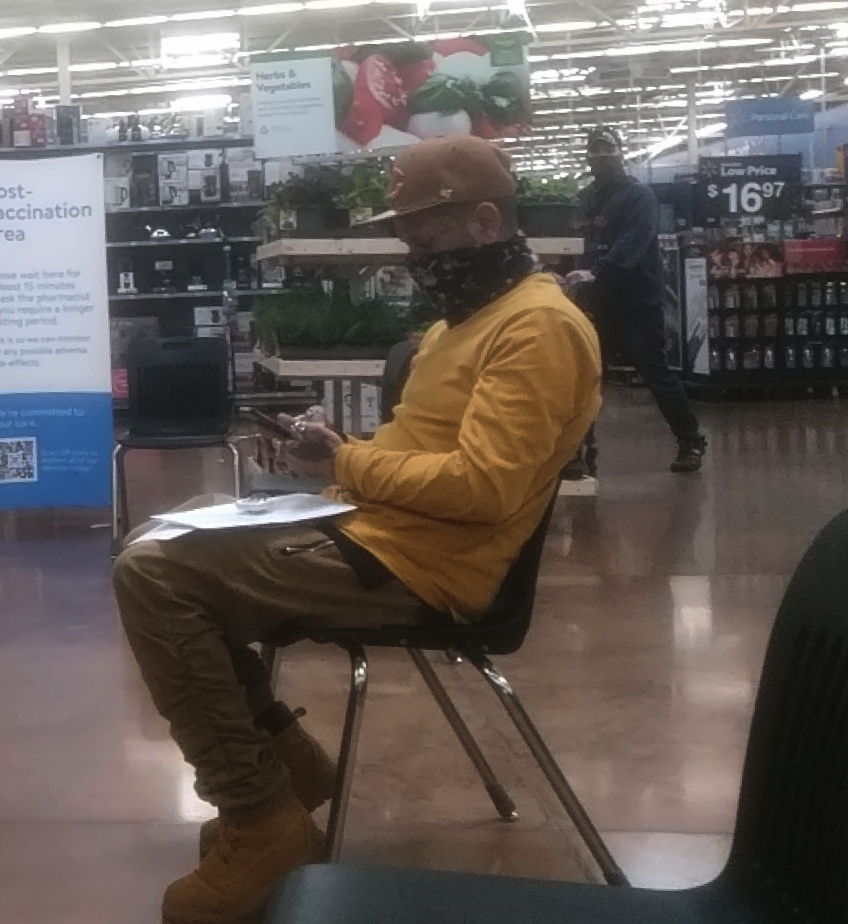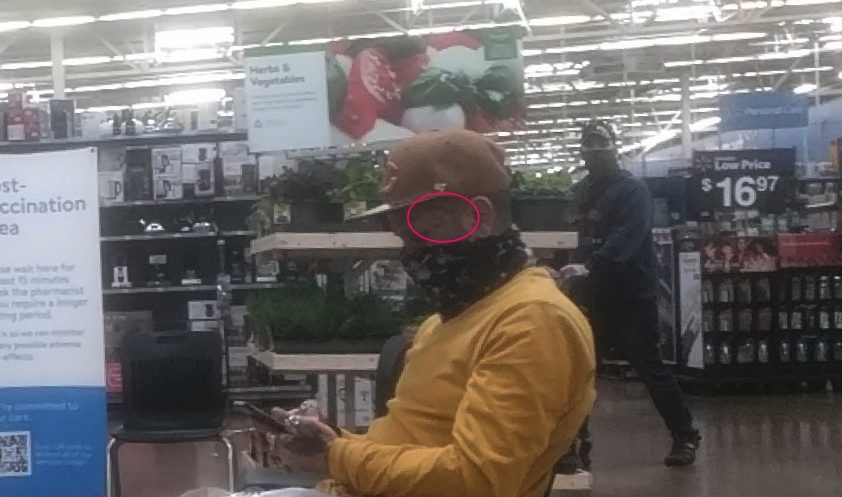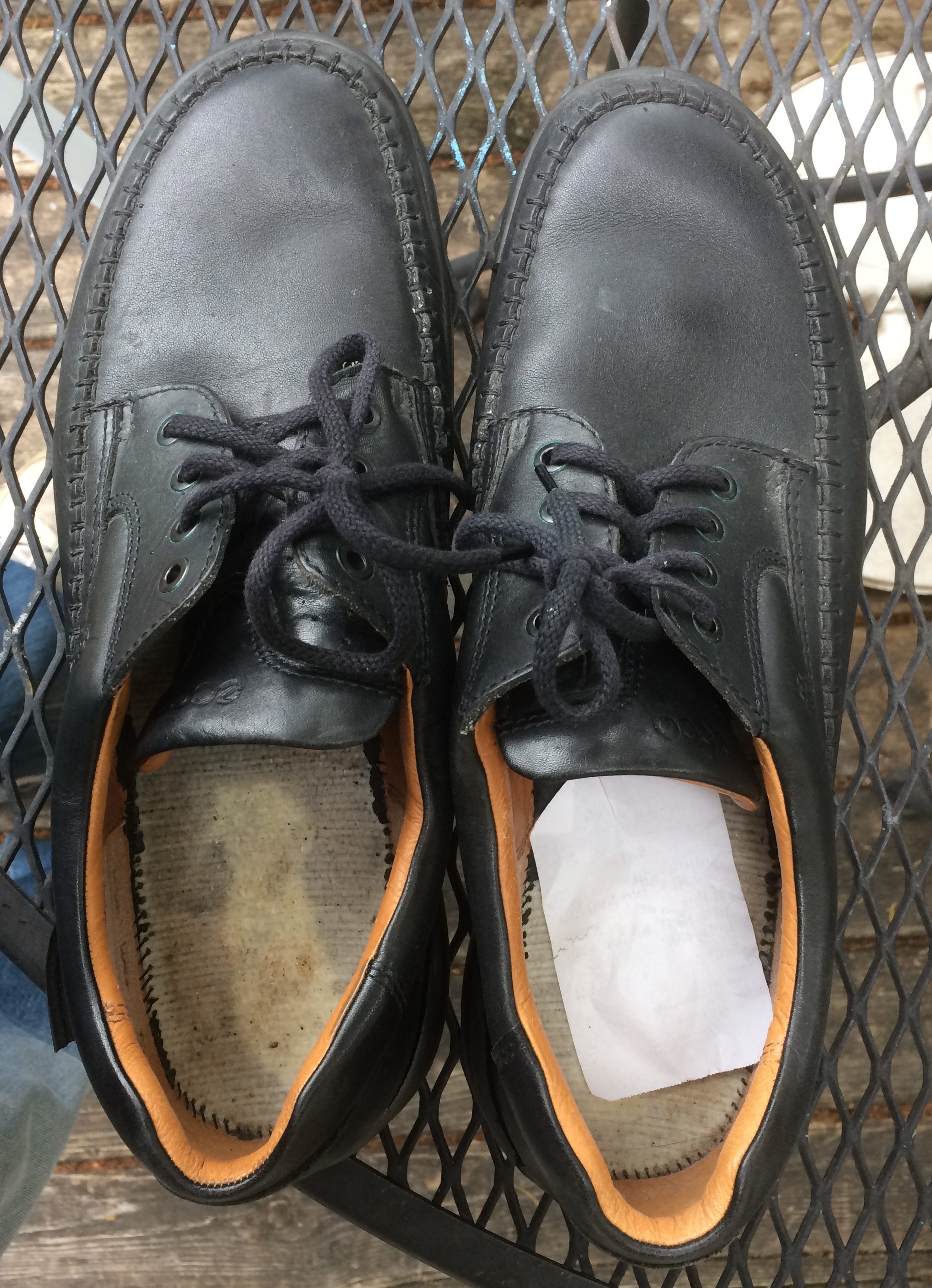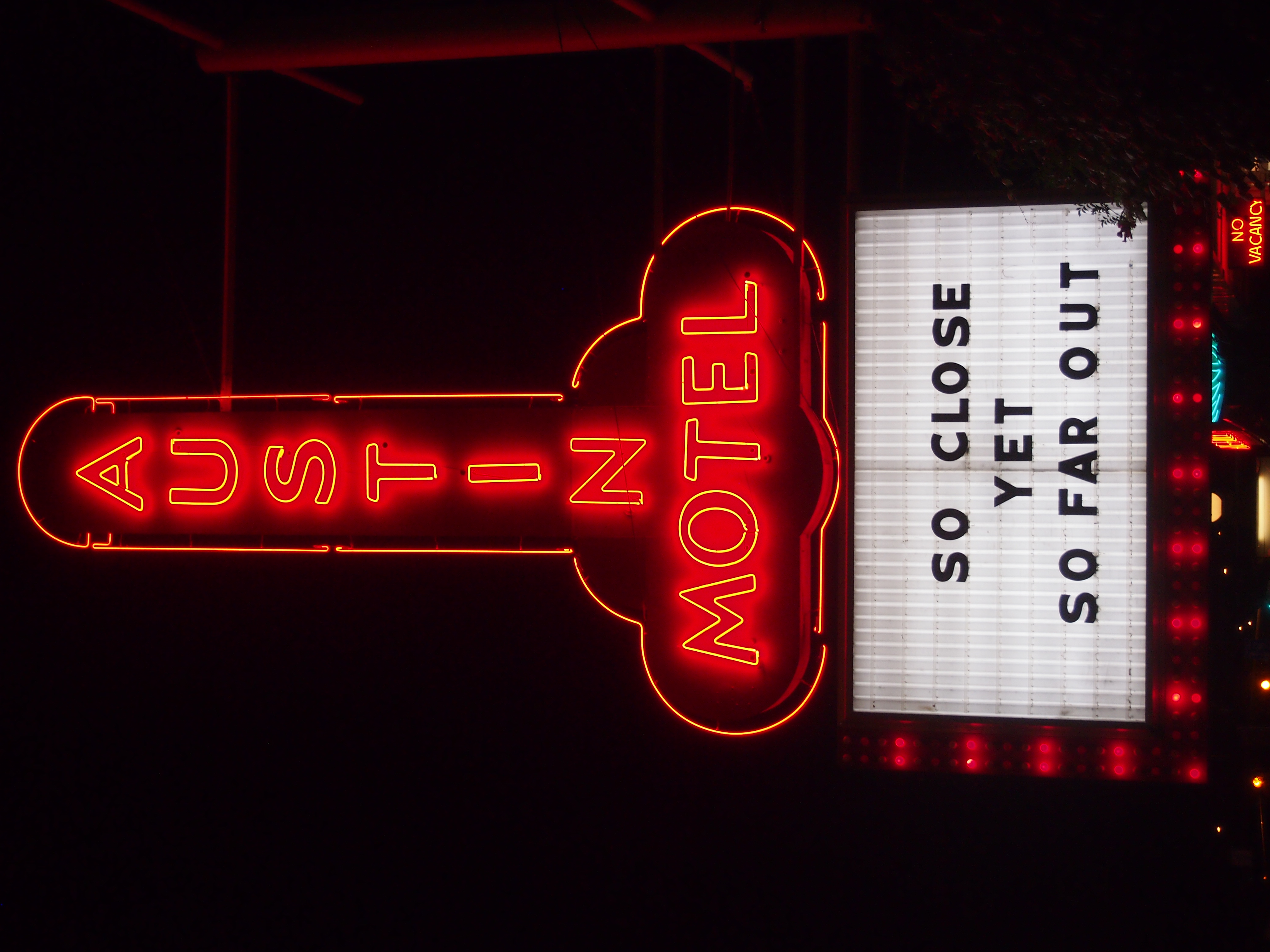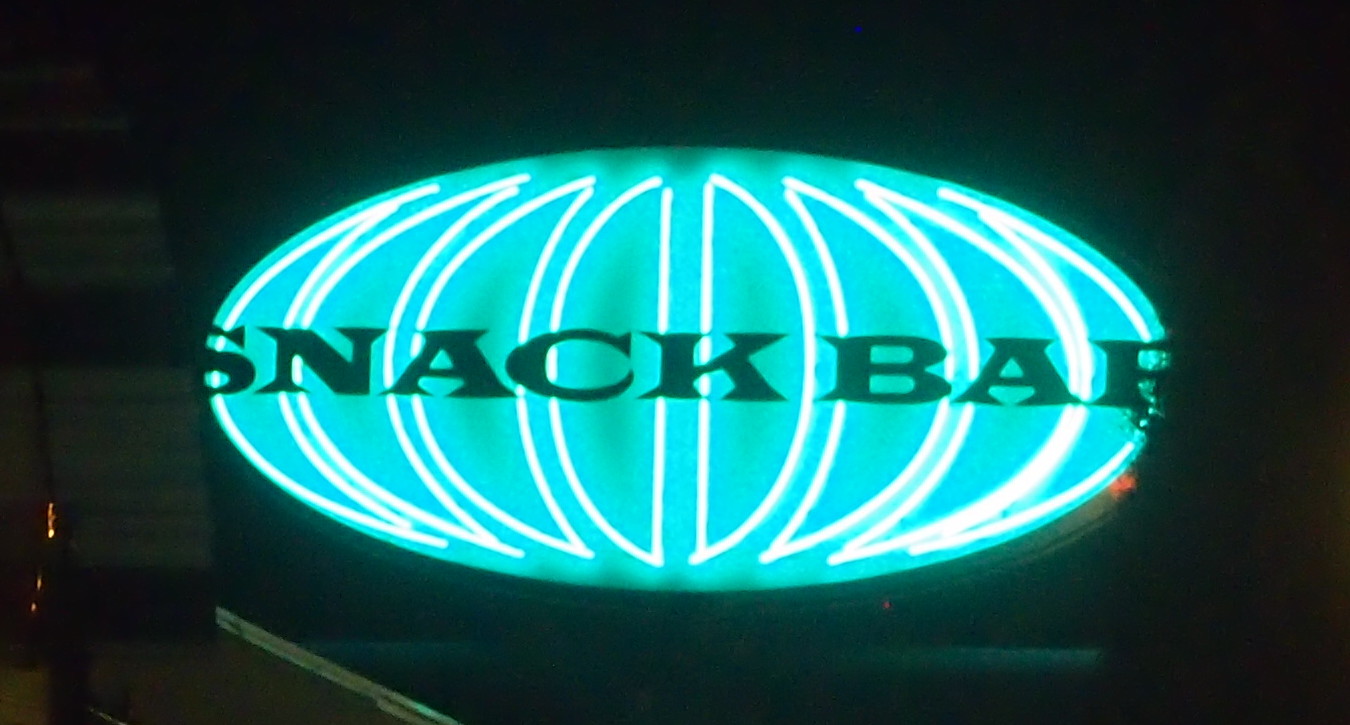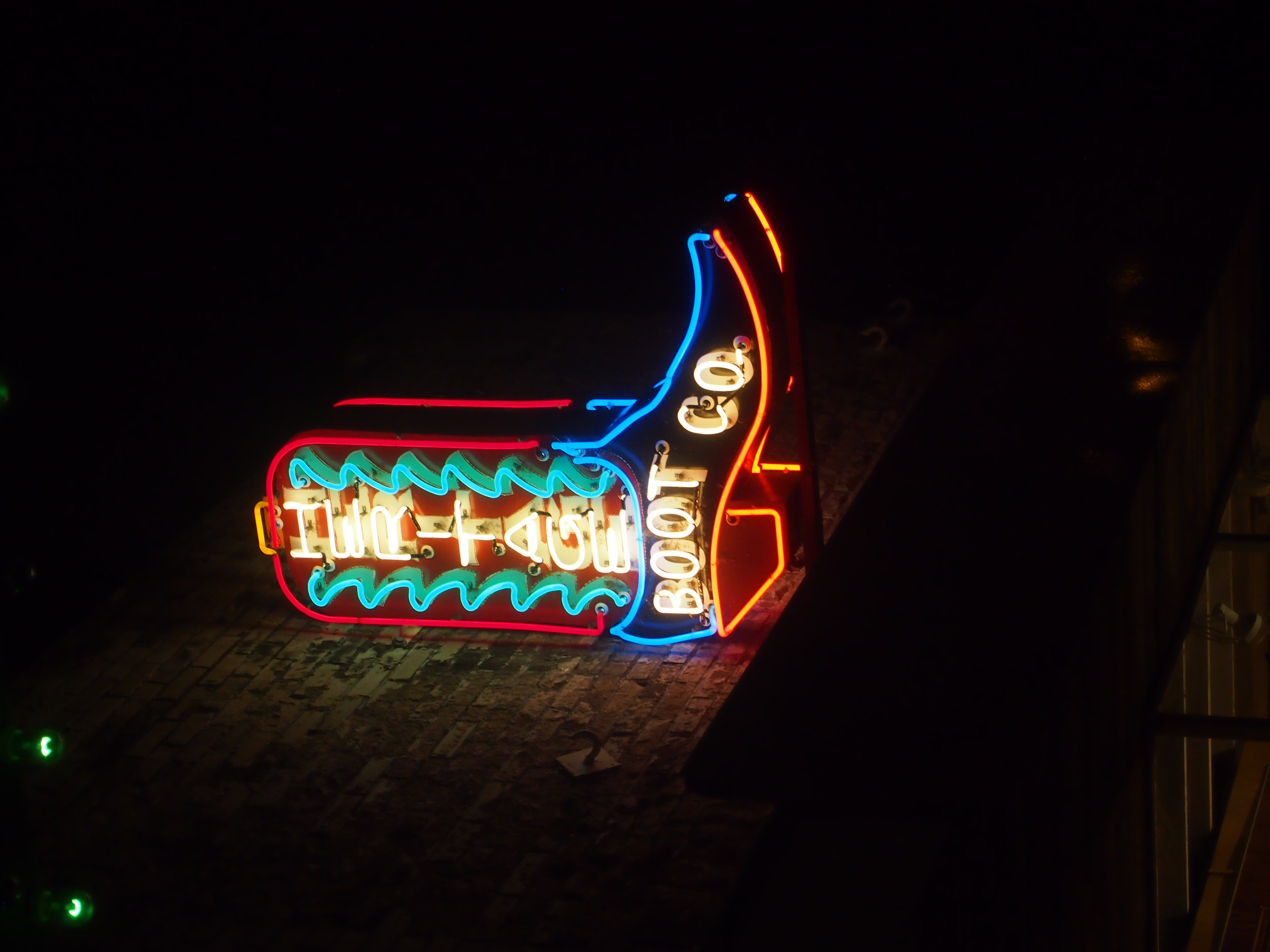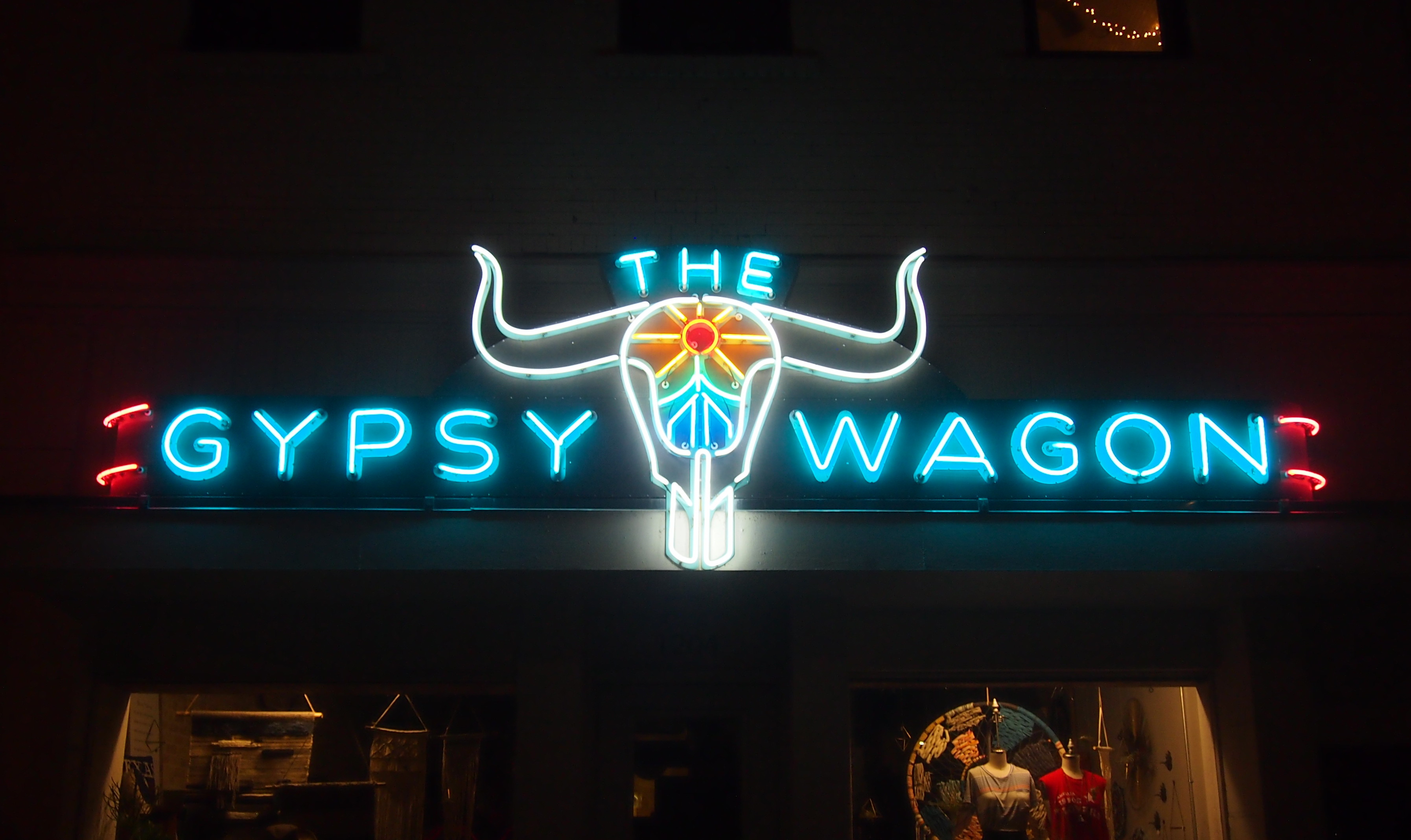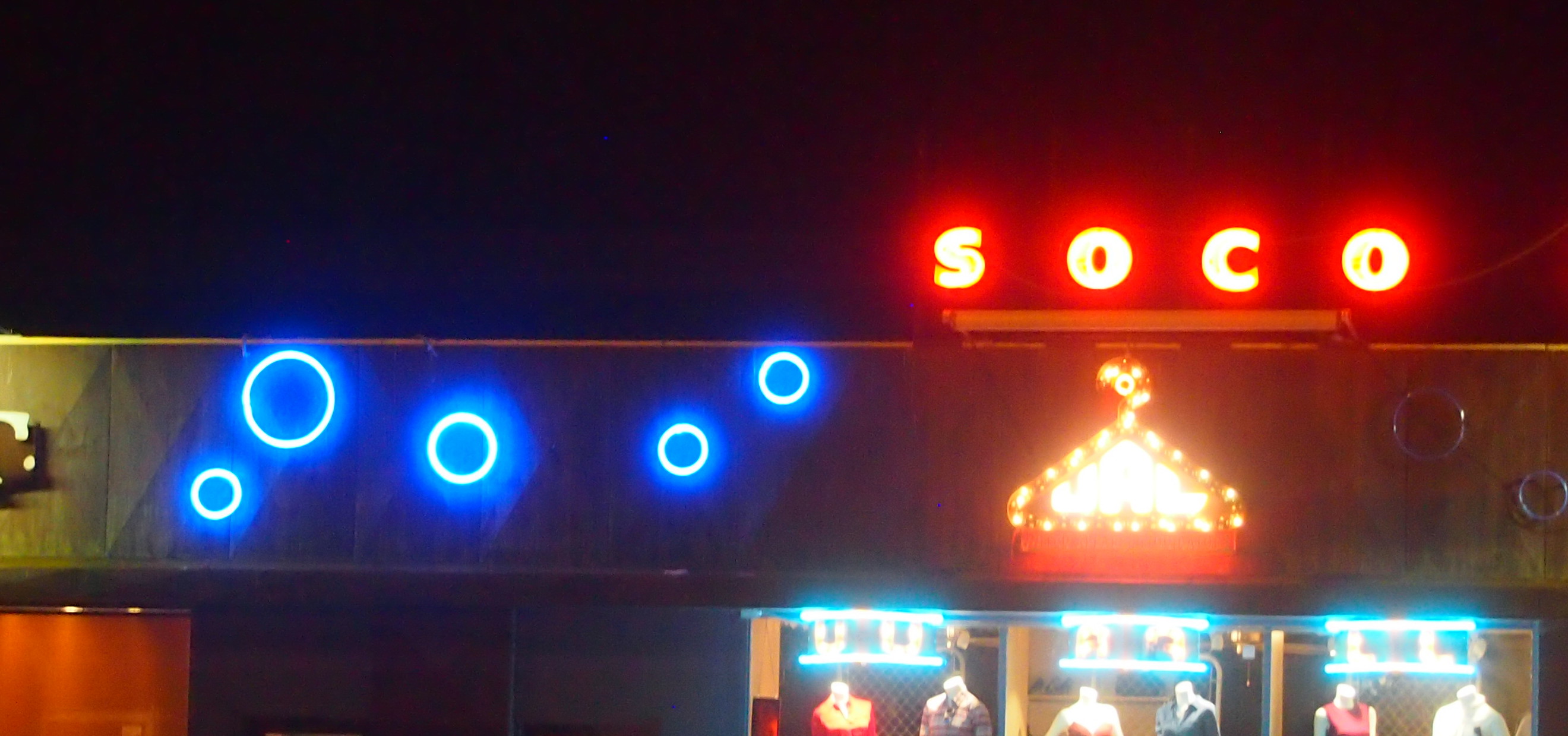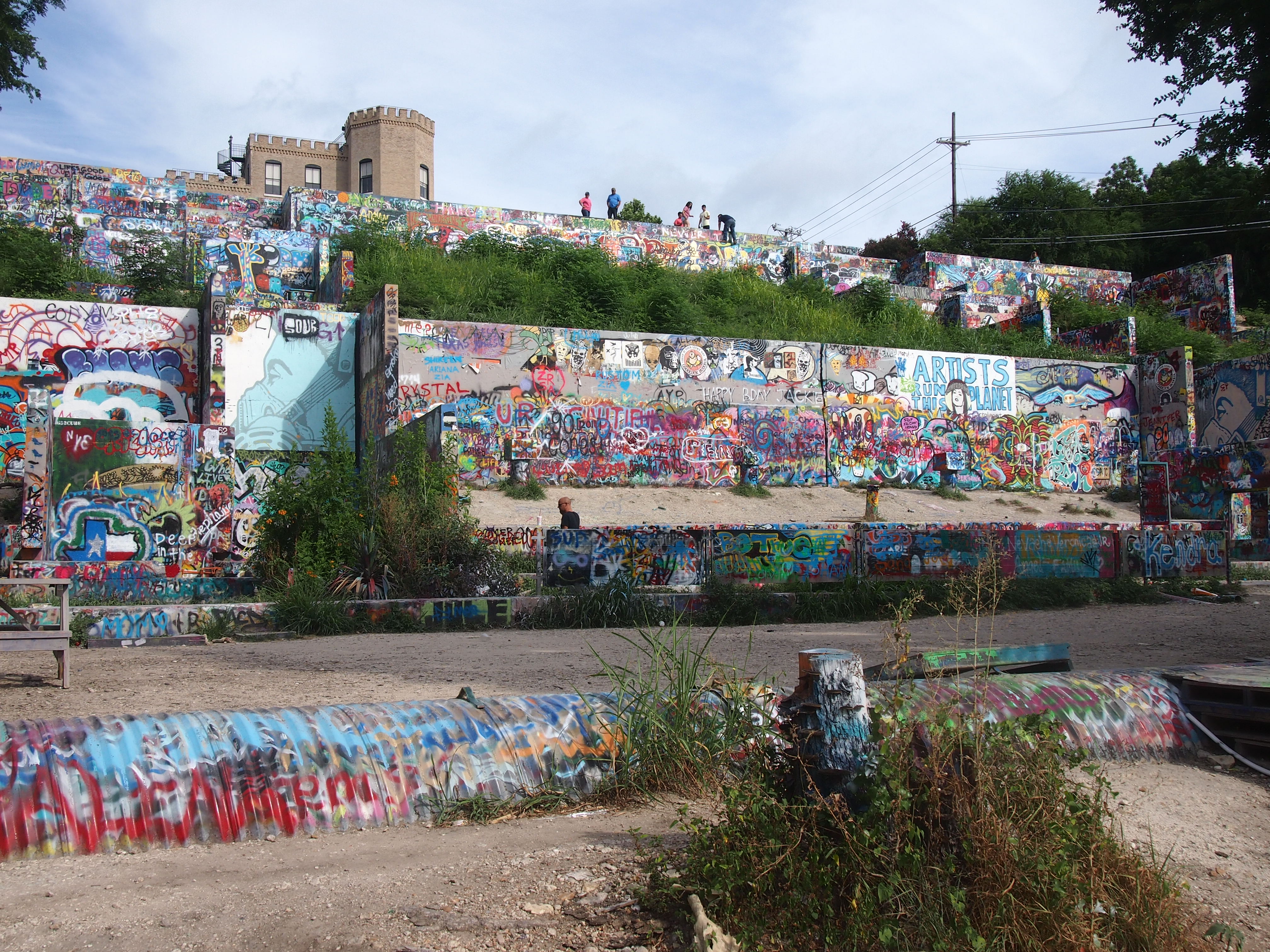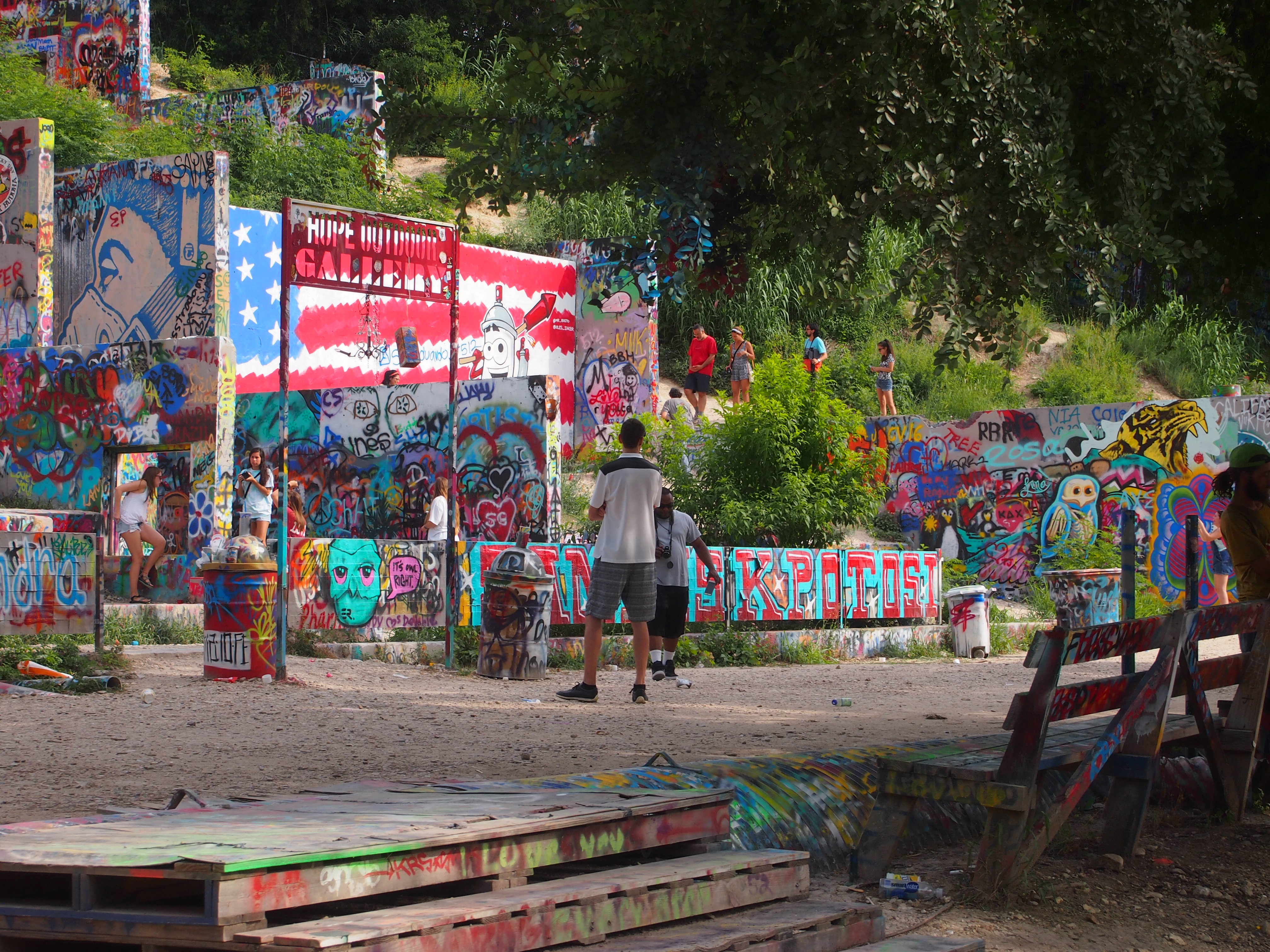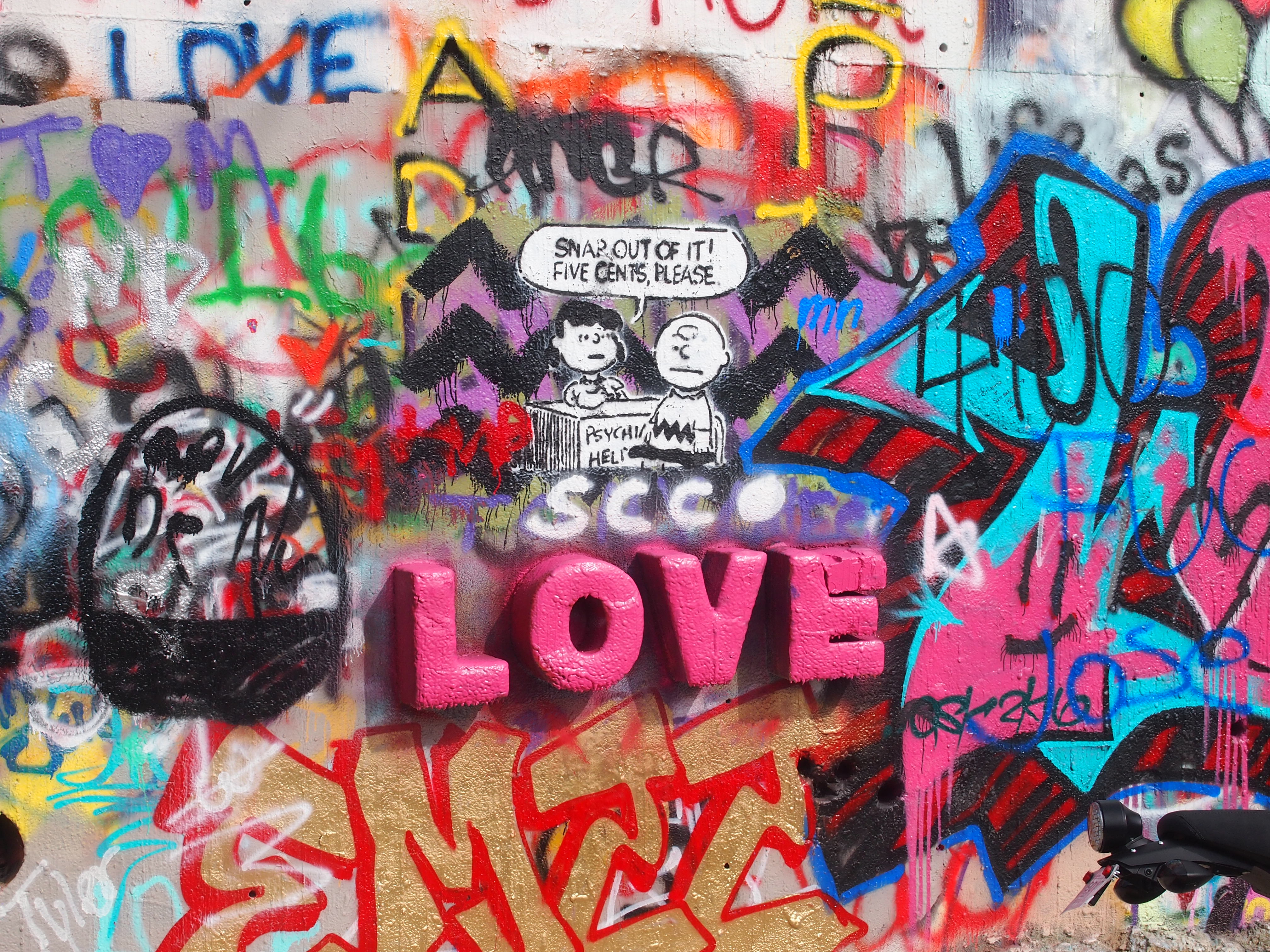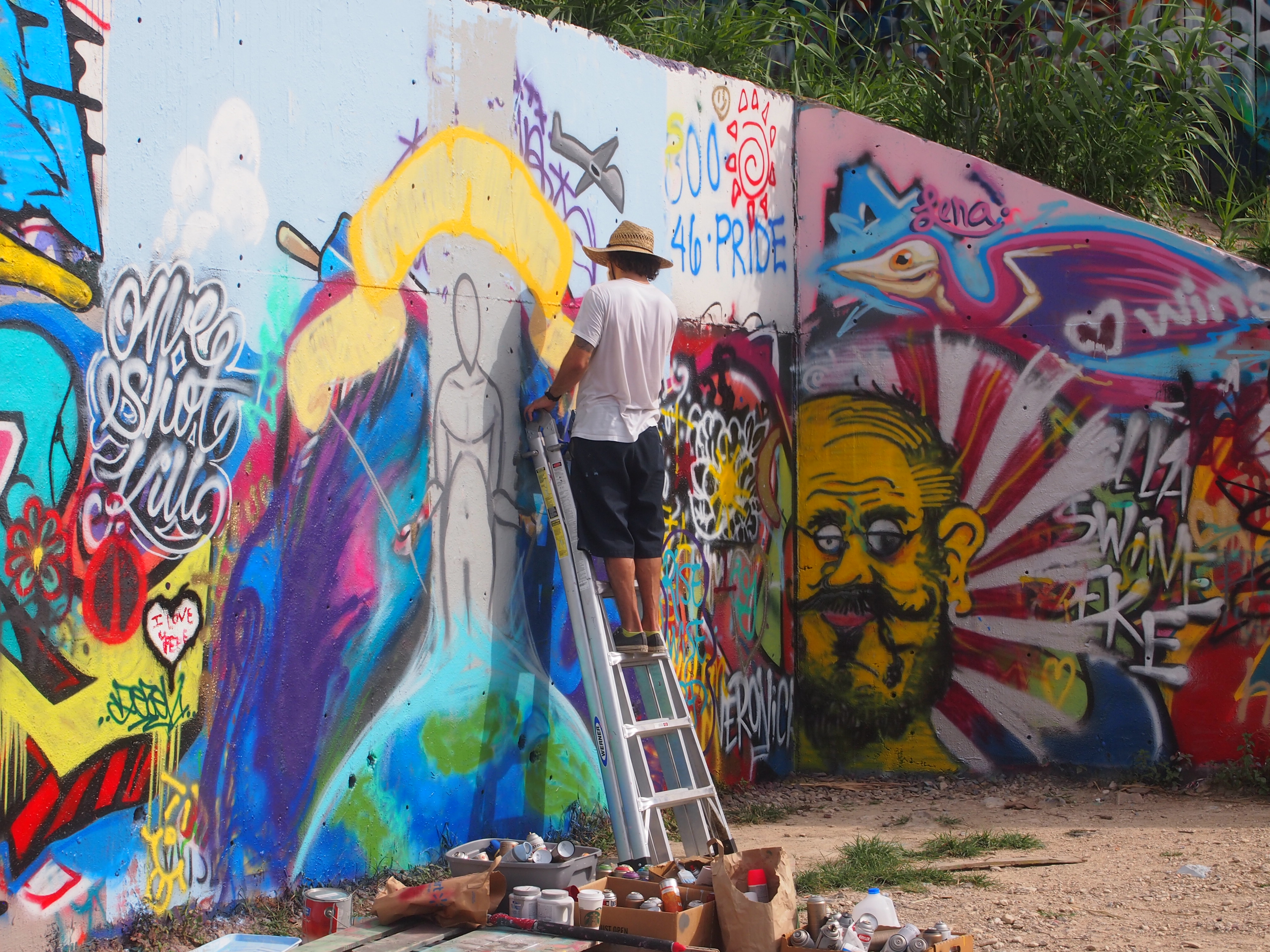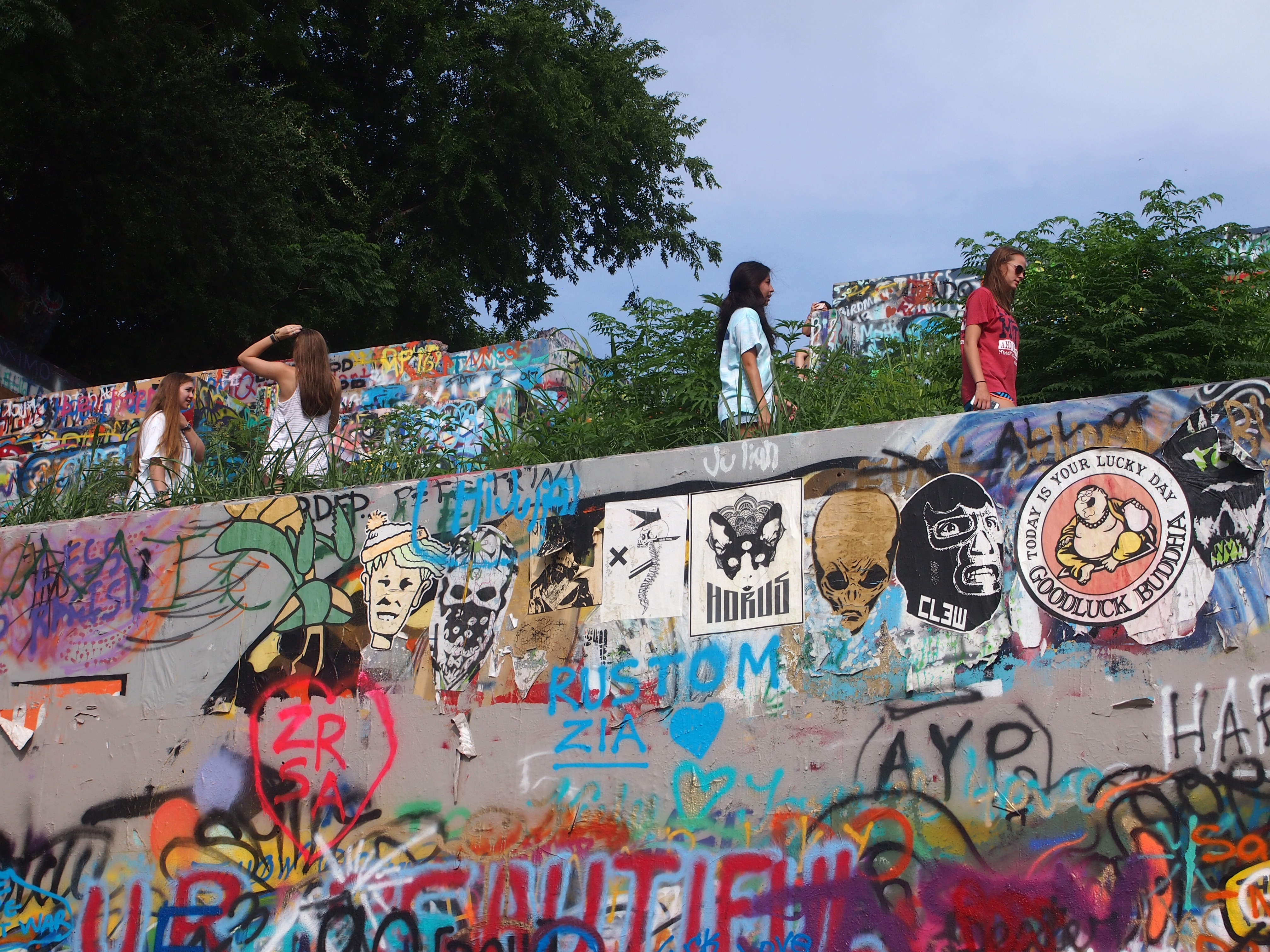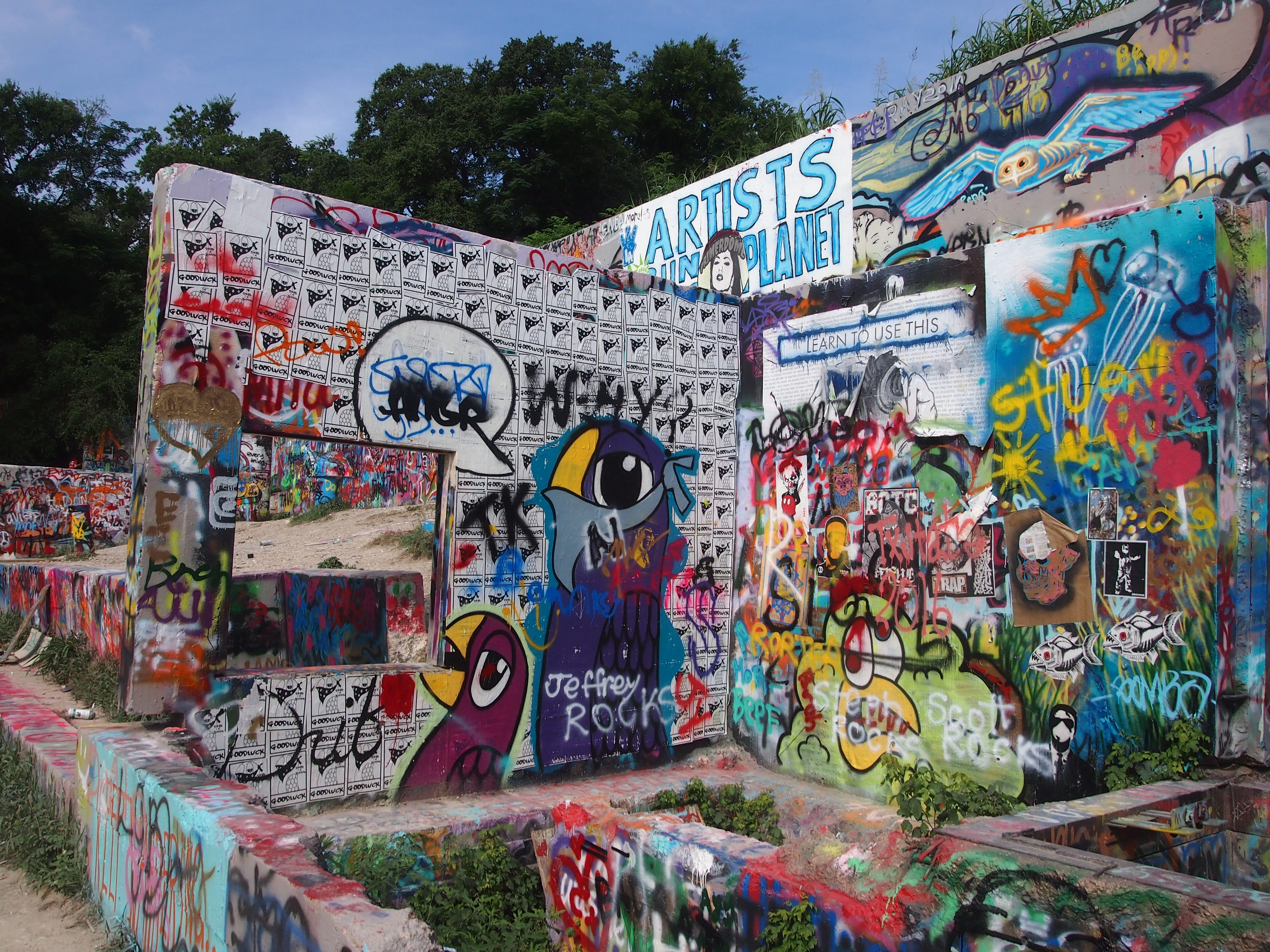Last Tuesday, my brother Jay and I drove from San Antonio to Kerrville, Texas (pop. 24,200) to visit an old friend of his, who has a separate small building in his back yard to house an extensive model train that he’s building. We got a detailed tour. Cool.
That was part of a larger trip that took me to Austin and San Antonio to visit friends and family. I flew to Austin on October 18 and returned from San Antonio today.
Rather than take I-10 west from San Antonio to Kerrville (though we returned that way), we drove Texas 16, which is mostly a two-lane highway that winds from exurban San Antonio and then into the Hill Country. Always good to drive the Hill Country, even on a rainy day. It was a rainy week in South Texas on the whole, but still quite warm for October. Had a few sweaty walks in San Antonio last week as well, more about which later.
Besides visiting Bob and his wife Nancy and his HO model train construction, we also stopped by the Glen Rest Cemetery in Kerrville (my idea). The recent rains had made it a muddy cemetery. Ashes to ashes and dust to dust, but also mud to muddy?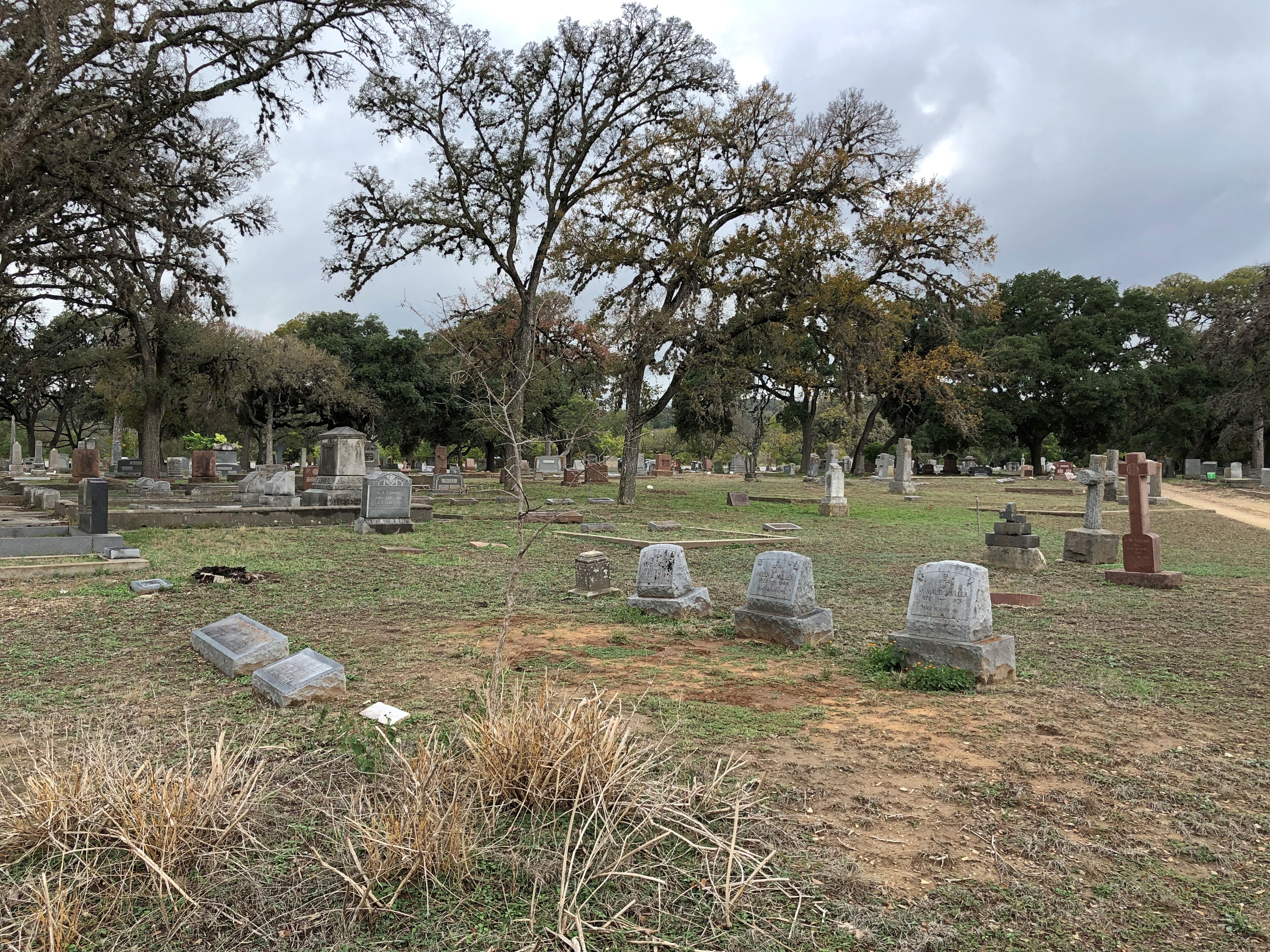
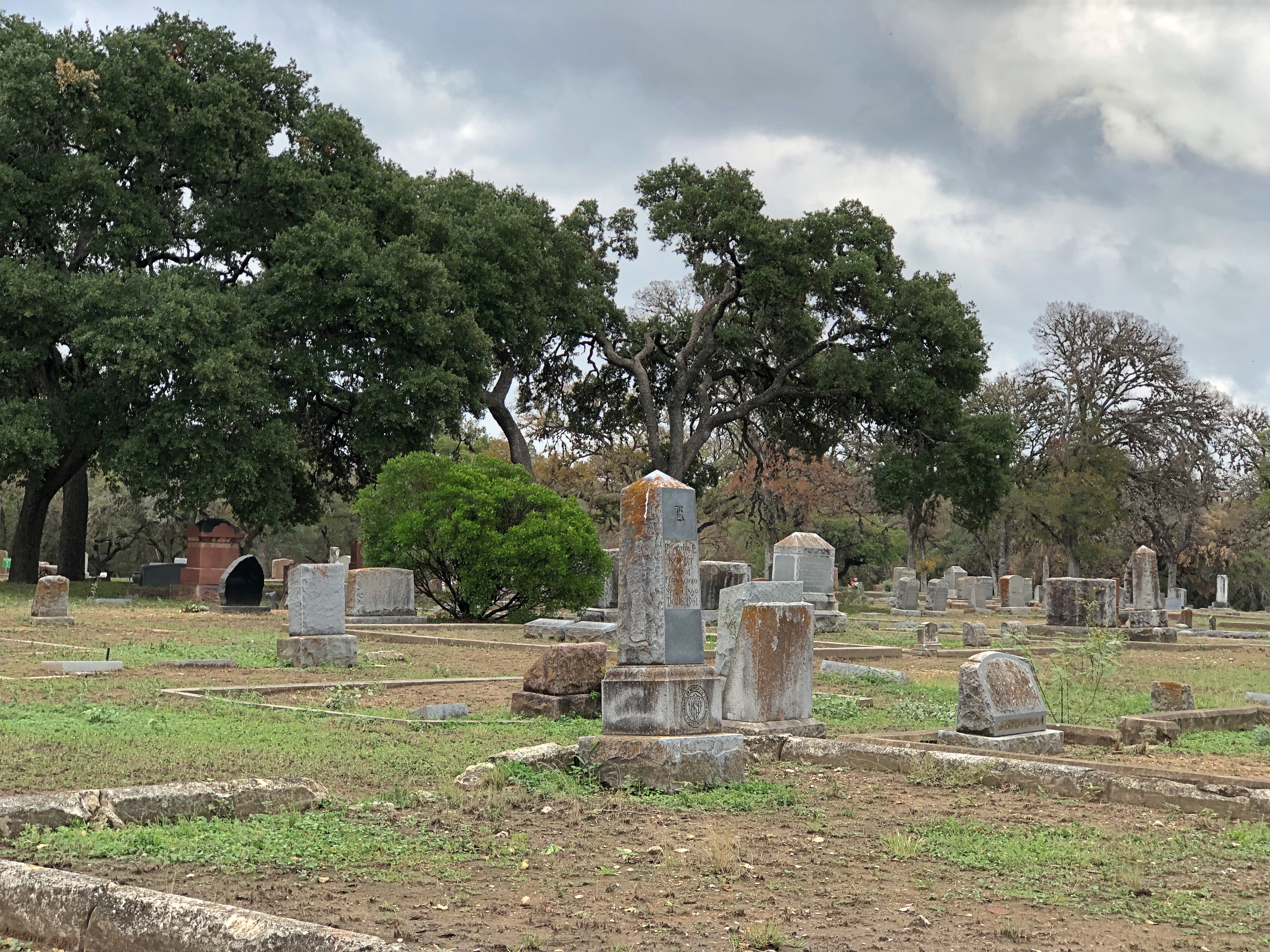

A curious figure. At least for a cemetery.

Glen Rest – which is incorrectly noted as Glen Rose on Google Maps – dates from 1892, according to the Texas Historical Commission plaque on site. “Glen Rest Cemetery is the final resting place for many pioneer and historic families of Kerrville and the surrounding Hill Country,” it says.
En route to Kerrville on highway Texas 16 is the much smaller burg of Bandera, pop. 829 and seat of Bandera County. That means a courthouse, and we stopped to take a look.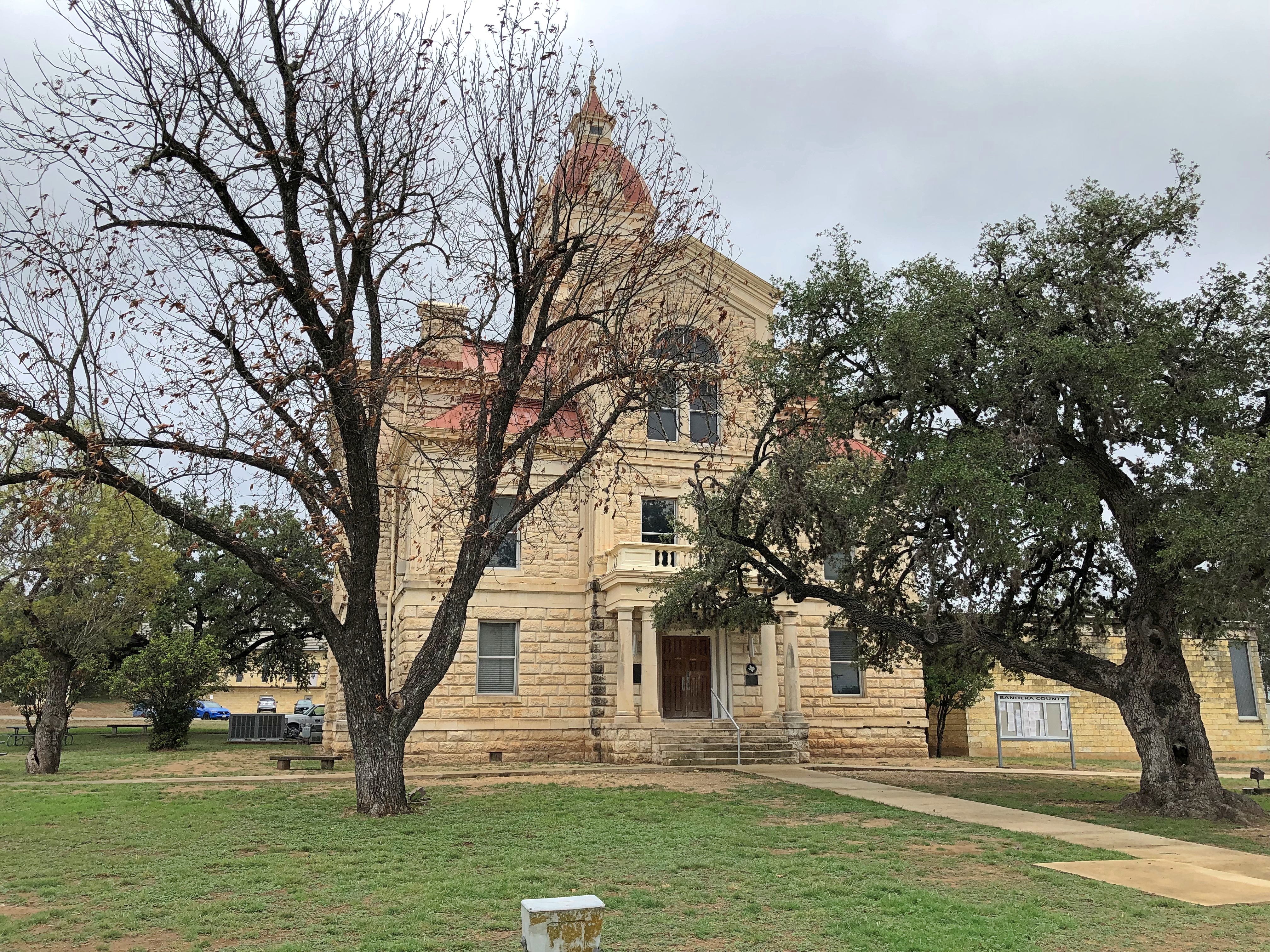
The courthouse itself isn’t unusual, but it is positioned unusually. Instead of being the focus of a square, it’s simply facing the highway. So are a handful of memorials. This one honors “All Cowboys” because Bandera is “Cowboy Capital of the World.”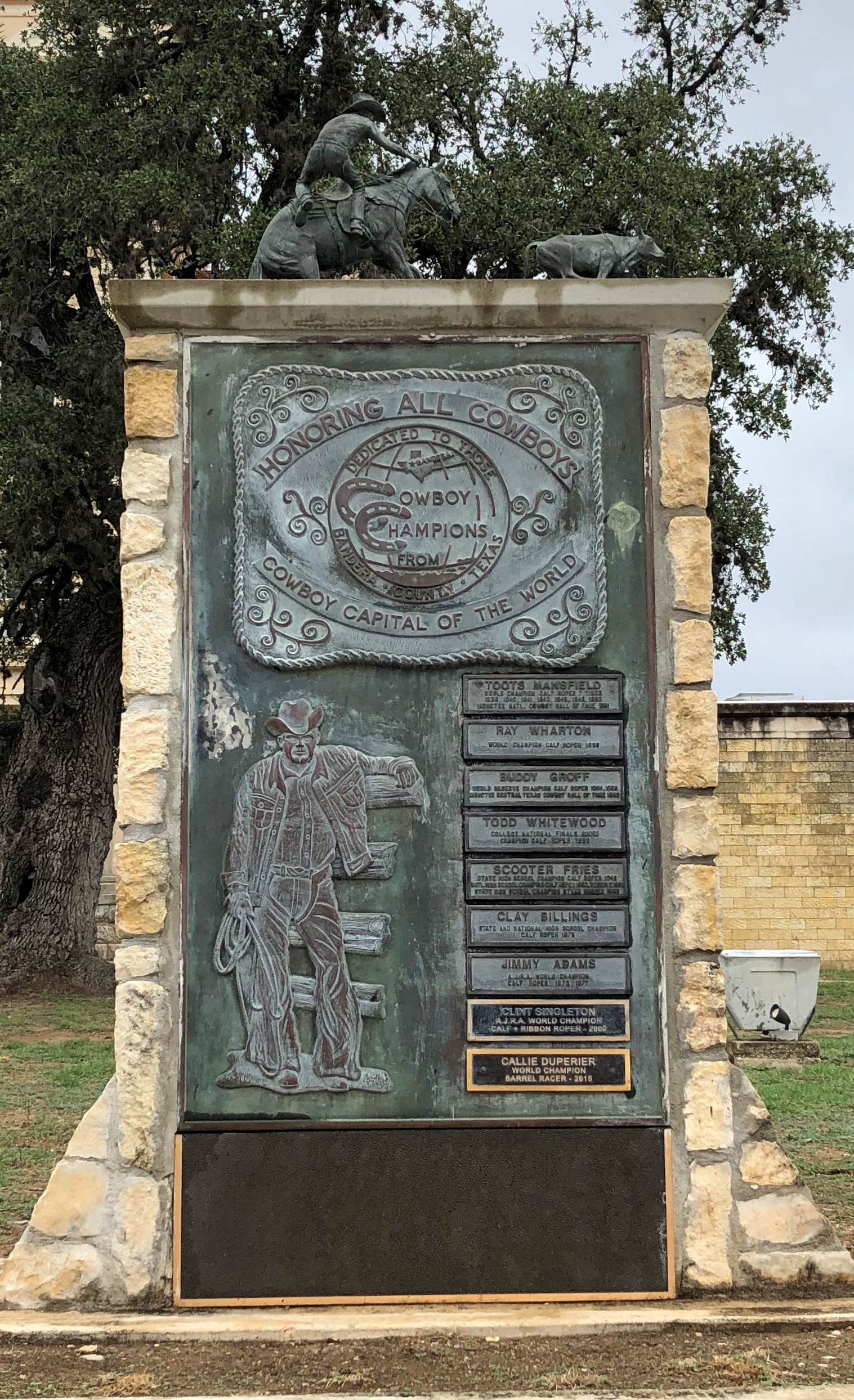
This stone oddity honors a Bandera pioneer named Amasa Clark, giving his birth and death dates as 1825-1927.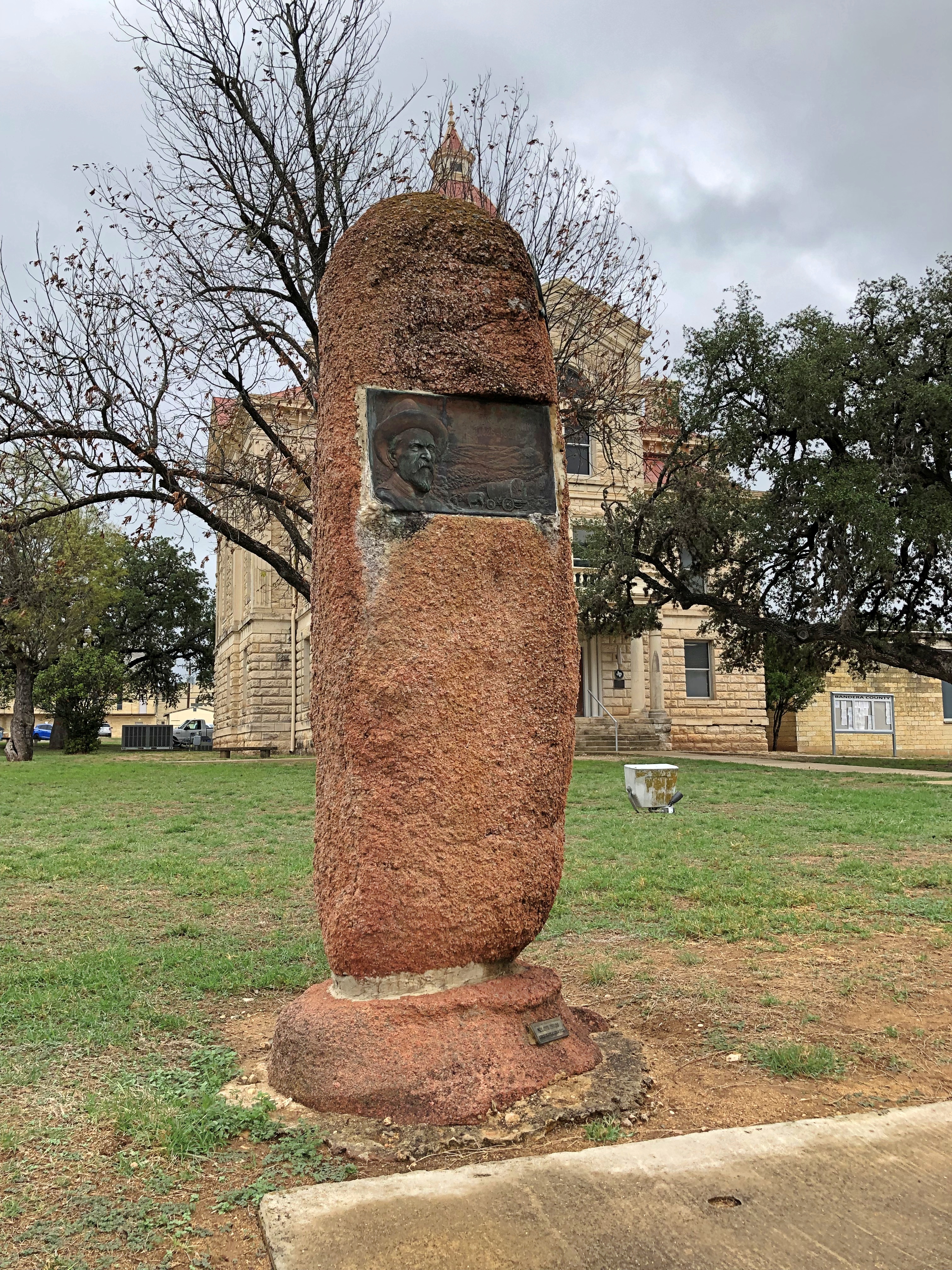
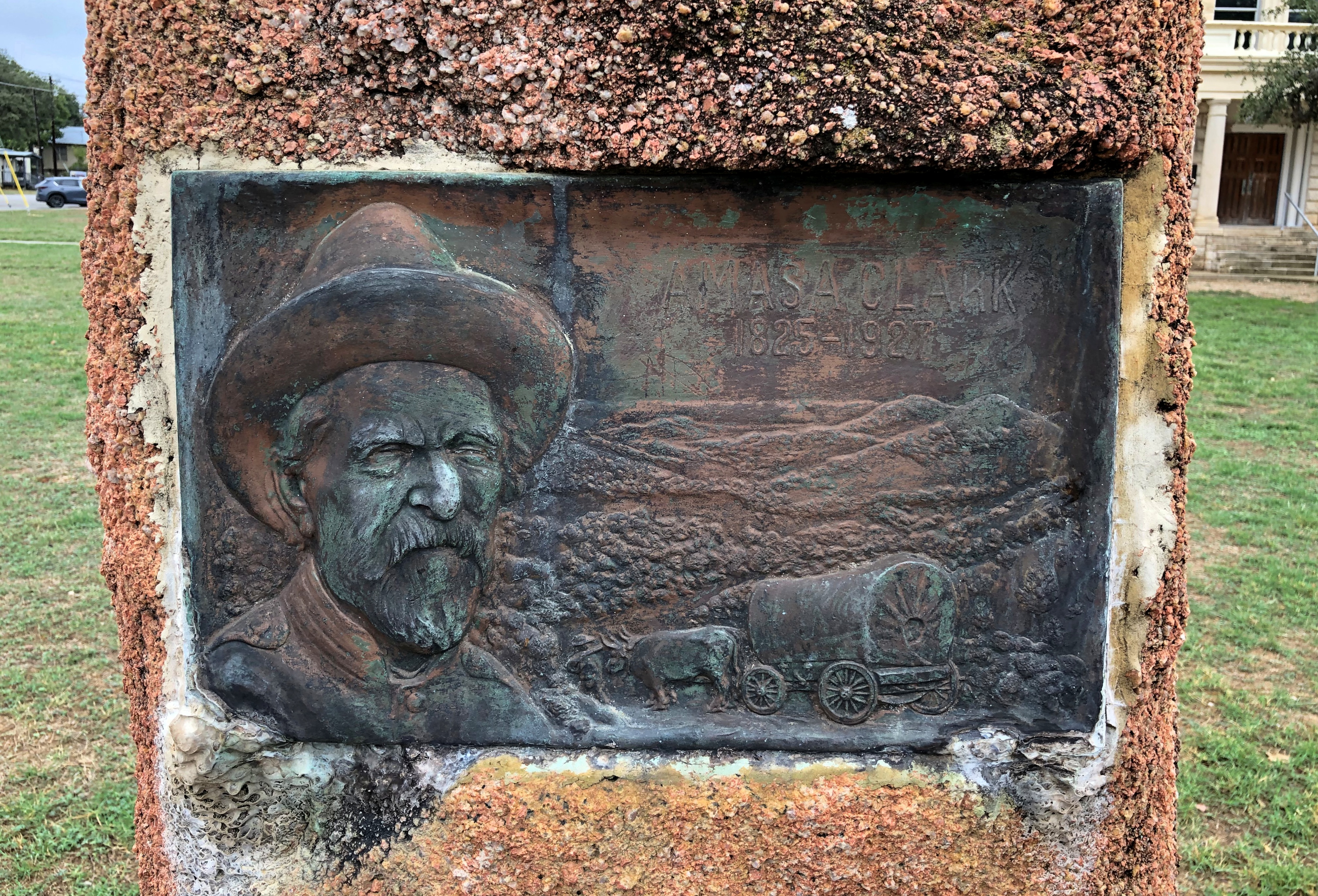
More about him is at Frontier Times magazine, which annoyingly doesn’t say when the text was written, who wrote it or where it was published. Internal evidence, along with the style of writing, puts it in the early 1920s, probably in a local newspaper. Clark came to the site of Bandera in 1852, not long after serving in the war with Mexico, and stayed until his death in 1927 as a very old man.
Also along the highway in Bandera is a strip center including a store the likes of which I’d never seen before. Neither had Jay.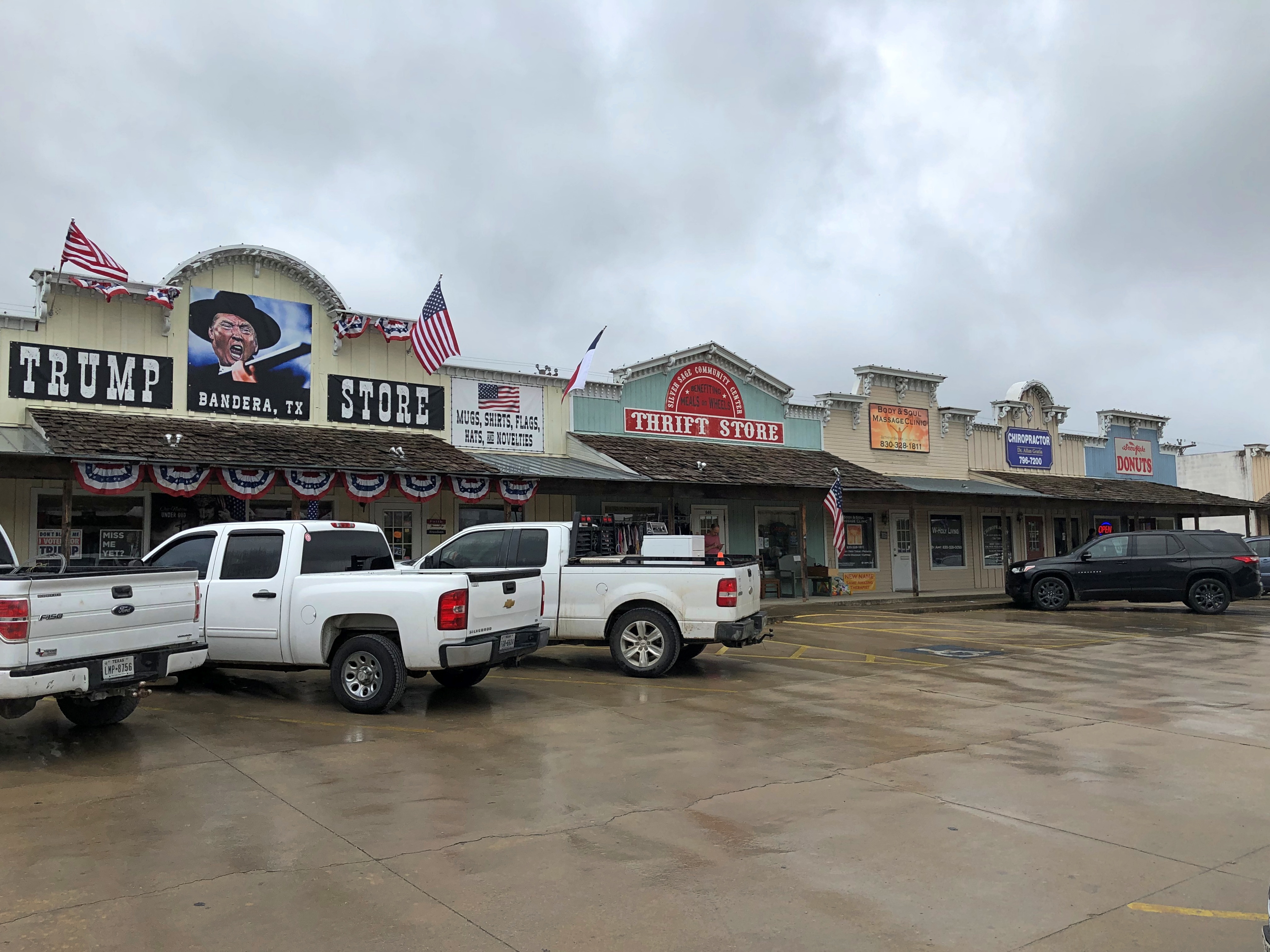
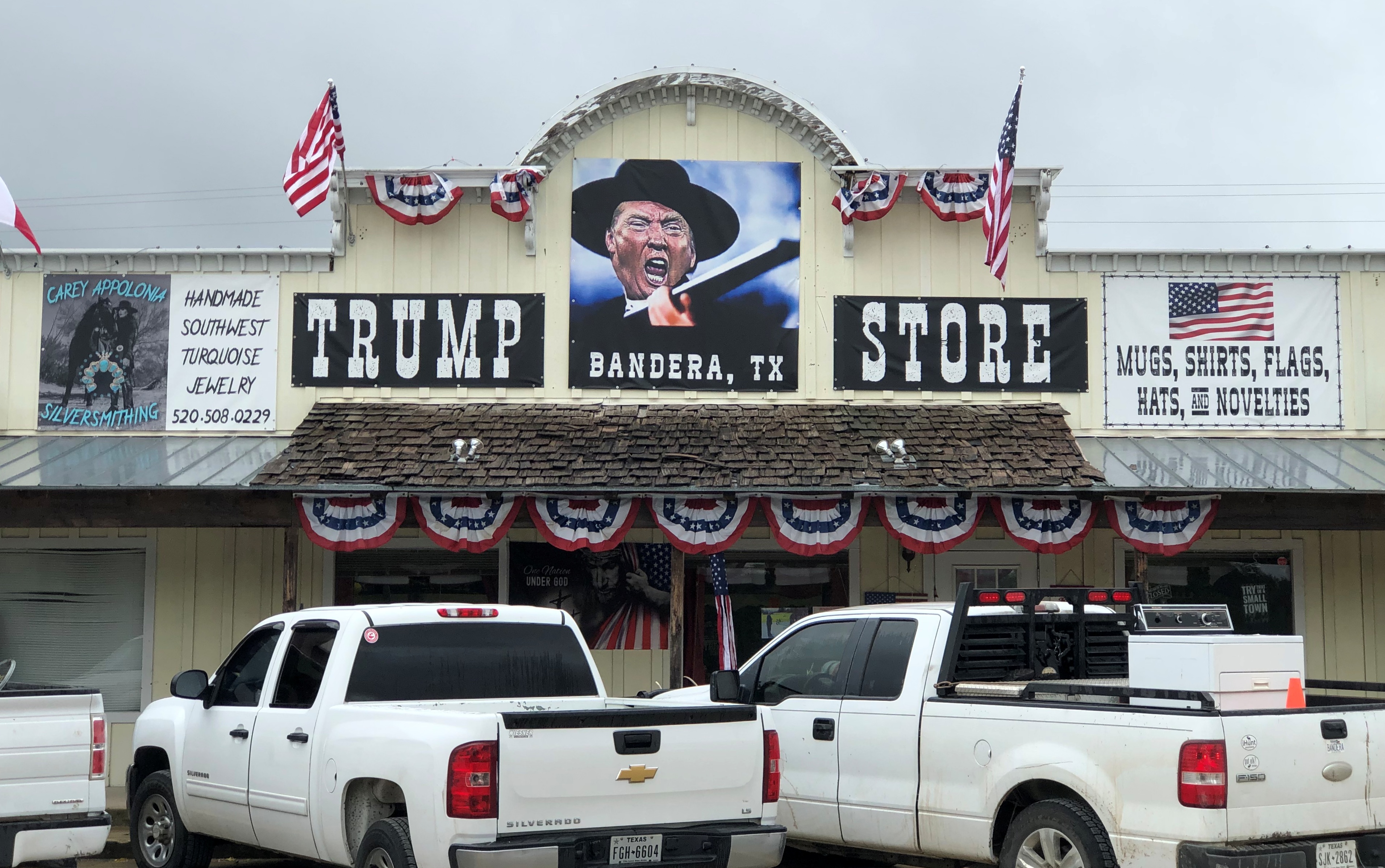
I should have asked to woman behind the counter how long the store has been in business, or whether the man himself gets a cut, or some other questions, but I was in vacation mode, not interview mode. So all I know is what I saw, which was enough. For the record, and this is no surprise, Trump overwhelmingly carried Bandera County — 79.1% to 19.7% for Biden — in the 2020 election.


